PEOPLE OF IDEAS

THE 19th CENTURY
(1800s)
By Alphabetical Order:
A
Alexander,
Archibald
Ampère,
André-Marie
B
Bauer, Ferdinand
Christian
Becquerel,
Antoine
Henri
Bell,
Alexander
Graham
Bergson,
Henri
Bessel,
Friedrich
Wilhelm
Blake, William
Blavatsky,
Helena
Petrova
Booth,
William
and Catherine
Bousset,
Wilhelm
Briggs,
Charles
A.
Browning,
Elizabeth
Barrett
Browning,
Robert
Burckhart,
Jakob
Christoph
Byron, George
Gordon Noel
C
Cannon,
Annie
J.
Carey,
William
Carlyle,
Thomas
Champollion,
Jean François
Chateaubriande,
François René, de
Coleridge,
Samuel Taylor
Comte,
Auguste
D
Dalton,
John
Darwin,
Charles
Dickens,Charles
Dilthey,
Wilhelm
Dostoevsky,
Feodor Mikhailovich
Durkheim,
Emile
E
Eddy,
Mary
Baker
Edison,
Thomas
Alva
Emerson,
Ralph
Waldo
Engels,
Friedrich
Evans,
Arthur
F
Faraday,
Michael
Feuerbach,
Ludwig
Fichte,
Johann
Gottlieb
Finney,
Charles
Fitzgerald,
George
Forsyth,
Peter
Fourier,
Charles
Fraunhofer,
Joseph
von
Frege,
Gottlob
G
Gladden,
Washington
Goethe,
Johann Wolfgang von
Green,
Thomas
Hill
Gunkel,
Hermann
H
Harnack,
Adolph
von
Hegel,
Georg
Wilhelm Friedrich
Hertz,
Heinrich
Hodge,
A.
A.
Hodge,
Charles
Husserl,
Edmund
Huxley,
T.
H.
J
James,
William
K
Kierkegaard,
Søren
Kirchoff,
Gustav
Robert
L
|
M
Mach,
Ernst
Maistre,
Joseph
de
Malthus,
Robert
Manning,
Henry
Edward
Marx,
Karl
Maxwell,
James
Clerk
Mendel,
Gregor
Mendeleyev,
Dmitry
Ivanovich
Michelson,
Albert
Mill,
James
Mill,
John
Stuart
Miller,
William
Moody,
Dwight
L.
Morley,
Edward
N
Newman,
John
Henry
Nietzsche,
Friedrich
O
Ørsted,
Hans
Christian
P
R
Rauschenbusch,
Walter
Renan,
Ernst
Ricardo,
David
Ritschl,
Albrecht
B.
Royce,
Josiah
Ruskin,
John
Russell,
Charles
Taze
S
Saint-Simon,
Count
Henri de
Schelling,
Friedrich
Schiller,
Friedrich von
Schliemann,
Heinrich
Schleiermacher,
Friedrich
Schopenhauer,
Arthur
Shelley,
Percy Bysshe
Smith,
Joseph
Smith,
William
Robertson
Spencer,
Herbert
Spurgeon,
Charles
Haddon
Strauss,
David
Friedrich
Sunday,
William
(Billy) Ashley
TTaylor,
E.
B.
Tennyson,
Alfred
- Lord
Thoreau,
Henry
David
Tolstoy,
Leo
Torrey,
R.A.
Treitschke,
Heinrich
von
W
Warfield,
Benjamin
B.
Webb,Sidney
Weber,
Max
Weiss,
Johannes
Wellhausen,
Julius
White,
Ellen
Whitman,
Walt
Wilberforce,
William
Wordsworth,William
Wrede,
Wilhelm
Y
Young,
Brigham
Young,
Thomas
|
EMPIRICISM AND POSITIVISM |
Robert
Malthus (1766-1834)
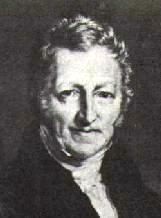
English economist and demographer.
Took the pessimistic view that all industrial growth would be more than
offset by an even faster rate of growth in the number of the poor.
Since the publication in 1798 of the book An Essay on the Principle of Population by
the English clergyman Robert Malthus, there was considerable discussion
in England about the problems created by a rapidly expanding human
population on the earth ... the issues of hunger, disease and war that
this would produce.
As an Anglican clergyman, Malthus wrested
with the problem of why God would allow suffering to occur within his
creation. Malthus finally concluded that God wanted man to rise
to the challenge of life, to succeed in the face of life’s difficulties
through the discipline of hard work. Those who fell short of the
challenge were simply some kind of disappointment to the great
Creator. Those who ‘failed’ merely reaped that which they had
sown.
 Malthus'
major works or writings: Malthus'
major works or writings:
Essay on Population
(1797)
 David
Ricardo (1772-1823) David
Ricardo (1772-1823)
 Ricardo's
major works or writings: Ricardo's
major works or writings:
Principles
of Political Economy (1817)
James
Mill (1773-1836)
 Mill's
major works or writings: Mill's
major works or writings:
Analysis of
the Phenomena of the Human Mind (1829)
Essay on Government
Auguste
Comte (1798-1857)
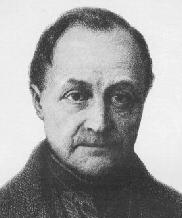
Comte reacted to the sometimes
wild speculation of French rationalists, who during the previous century
had built their philosophical theories on "reasonable" proposition – rather
than on the observation of actual phenomenon. In short, he introduced
British empiricism to French or continental philosophy, terming his approach
"positivism."
He was particularly interested
in seeing social philosophy built on very careful observation of actual
social behavior rather than mere rationalist speculation (such as Rousseau's
social theories a half-century earlier). Thus he laid the groundwork
for the field of modern sociology with its demand for "factual" foundations
for all assertions of truth.
But interestingly, in laying
out his arguments, he himself employed a very rationalistic or speculative
theoretical foundation for his assertions. In his major six-volume work,
Course
of Positive Philosophy, he posits an evolutionary development of human
knowledge over the aeons – a developmental picture that was entirely speculative – and
related more to a simplistic reading of the events surrounding Revolutionary
France over the course of the past century.
He stated that human knowledge
began in its primitive stages as theology, or laying all events at the
feet of divine forces or God (related to the Divine rights claims of monarchical
authority). The next stage, the rationalist or philosophical stage
was once characterized by broad abstract principles as the foundation of
truth or knowledge (he had in mind the rhetoric of Revolutionary France).
But the evolved state of knowledge (a pragmatic, bureaucratic post-Revolutionary
France) would be built on the works of scientific scholars who would direct
society through their knowledge of science.
None of this was itself based
on the empirical methods he called for in his study – but was itself a continuation
of the French rationalist approach to knowledge.
Nonetheless his ideas would
catch the imagination of 19th century Europe and help move it toward the
notion that all truth is built on fact and fact alone.
 Comte's
major works or writings: Comte's
major works or writings:
Systeme de
politique positive (1823) and (1851-1854)
Cours de philosophie
positive (Course of Positive Philosophy) (1830-1842)
A General View of Positivism
(Chapter I: Its Intellectual Character) (1856)
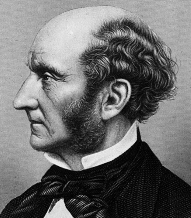
John
Stuart Mill (1806-1873)
J.S.
Mill was an amazing child prodigy, reading classic Greek literature
(from Aesop to Plato) by age 8, then a full array of Latin and Greek
works by age 10 ... plus history, math, physics and astronomy. In
all of this, he was carefully "home schooled" – pruned
and protected in his infancy and youth by his father, James Mill – in
order
that the son would be "associated" only with the sharpest minds (his
father's and that of the family friend Jeremy Bentham) ... and not with
lower social orders of his own age ... a key part of the educational
philosophy of the British "Positivist" movement. His father's
goal was to grow his son into "a bright light of Utilitarian philosophy
that might light the world." In part the father succeeded, though
at a deeply heavy emotional and spiritual cost to the son.
Utilitarianism, Positivism, or Liberalism – all amounted to pretty much the same thing: holding the common view that a person is born with no a priori thoughts or abilities ... but as a thinking creature is simply the result of careful development by guiding hands –
hopefully ones that care deeply for the happiness of those in their
care. It was all very personal. Liberals (both Americans
and British, from Jefferson to the Mills) viewed with great distrust
the intervention of public authorities in this process. In short,
"the best government is the one that governs the least!" This
would be a central tenent of Mill's Utilitarian or Liberal philosophy.
The understanding was that simply a person becomes what the surrounding
world brings to that person ... nothing more, nothing less.
Therefore that surrounding world – physical as well as social – must
be carefully shaped, engineered, protected. But this must be
carried out on a personal or individual basis ... not on a public or
Socialistic basis. Personal freedom was essential to proper development.
However ... he was closely connected with the British administration of India – being a high-ranking official from 1823 (at age 17!) all the way to the end of the East India Company in 1858. In this matter, he
would, take a broader view of the responsibilities that fell to more
enlightened social hands in face of a "barbarian" society.
Something akin to social action or "benevolent despotism" would be
required under such circumstances ... but must be carefully conducted
so as to benefit and not just merely subdue such a barbarian society..
And
as far as an issue under much discussion at the time, Mill felt that
religion was the highly laudable ability of human thought to
rise above the merely physical or natural condition of life to
contemplate
and be moved by ideals of excellence. But whether there was a
supreme
Deity or consciousness to which human thought draws itself – or which energizes
the forces of life as Creator and Sustainer – was a most uncertain proposition for Mill.
In any case, the very
simplicity and the very attractiveness of Utilitarian or Positivist
"Liberalism" would catch on widely in the fast-changing political
setting of 19th century Britain. And Mill, with his many
publications, would be one to give great clarity and appeal to this
idea ... also helping to make the British Liberal Party a growing force
in British politics.
 J.S.
Mill's major works or writings: J.S.
Mill's major works or writings:
System of
Logic (1843)
Principles of Political
Economy (1848)
On Liberty
(1859)
Representative Government
(1861)
Utilitarianism
(1863) (Wiretap)
Three Essays on Religion
(1874)
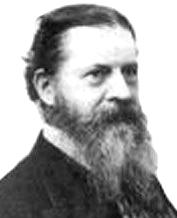 C.S.
Peirce (1839-1914) C.S.
Peirce (1839-1914)
coiner of the term "pragmatist"
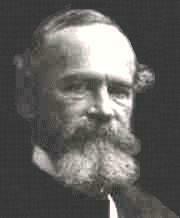 William
James (1842-1910) William
James (1842-1910)
American pragmatist
 James'
major works or writings: James'
major works or writings:
Radical Empiricism
The Will To Believe
(1897)
|
|
Johann
Wolfgang von Goethe (1749-1832)
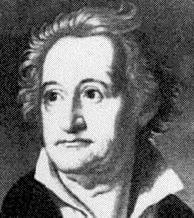
Goethe was an individual of
wide tastes and talents, being a poet, dramatist and scientist all in one.
He was early influenced by Herder, who inspired in him a deep appreciation
of German folk culture and consequently a spirit of German nationalism.
But Goethe was also a profound
individualist, intrigued by the power and depth of personal experience
and emotion. In his first play,
Götz von Berlichingen
(1773), Goethe explored the depths of individual human sentiments – and
laid the foundation for the Sturm und Drang movement – which advocated
personal freedom in the face of oppressive, medieval attitudes in Germany
concerning the role of the individual in society. This movement would
later blossom into German Romanticism.
In
the 1780s Goethe went to Rome to study classic art, architecture and
literature and for a while came under the more formalistic style of the
neo-classicist movement. But on his return to Germany he found
little appreciation for his new views. He then turned to science for a
while. But his longer-standing romantic inclinations reasserted
themselves and his independent individualist style returned to the
fore. This culminated in his all-time great work, Faust (actually
written and rewritten in two parts over a long period of time reaching
perhaps from 1772 to 1829) ... which was an epic tale of the search of
the individual for that which is of a lasting or transcending value in
the face of freedom's great opportunities – and uncertainties.
His
Faust would be the best read work of German literature (roughly
equivalent to the place Shakespeare has long enjoyed in English
literature) ... inspiring young Germans for generations to quest for
the German ideal, the romantic spirit or soul that made Germany unique
among the nations.  Goethe's
major works or writings: Goethe's
major works or writings:
Götz
von Berlichingen (1773)
The Sorrows of Young
Werther (1774)
Wilhelm Meister's
Apprenticeship (1796)
Faust (1808)
Wilhelm Meister's
Travels (1821)
Friedrich
von Schiller (1759-1805)

Schiller was a German dramatist
and poet who contributed heavily to the
Sturm und Drang movement.
His own arrest in 1782 by the Duke of Württemberg for leaving Württemberg
without ducal permission to attend the performance of his first play, Robbers,
in another German state no doubt played an important role in shaping his
views on this matter. His close friendship with Goethe was also an
important source of inspiration for his politically charged dramatic works,
which dignified the instincts of the sensitive, heroic individual over
the heavy-handedness of traditional authority and social tradition.
 Schiller's
major works or writings: Schiller's
major works or writings:
The Robbers
(1781)
Don Carlos(1787)
Wallenstein
(1799)
The Maid of Orleans
(1801)
William Tell
(1804)
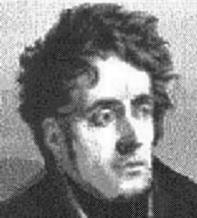 Vicomte
François René de Chateaubriande (1768-1848) Vicomte
François René de Chateaubriande (1768-1848)
 Chateaubriande's
major works or writings: Chateaubriande's
major works or writings:
The Genius
of Christianity (1802)
Memoirs from Beyond
the Tomb (1849-1850)
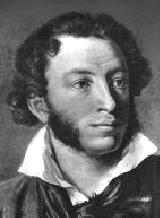
Aleksandr
Pushkin (1799-1837)
Considered the father of modern
Russian literature – for it was he who dared to write in Russian, the language
of the commoner, rather than, say in French, which was considered the language
of the upper classes or aristocracy. His thinking was considered
very revolutionary and he was dismissed from governmental service and banished
to his family's rural estate (he was rehabilitated two years later).
 Pushkin's
major works or writings: Pushkin's
major works or writings:
Eugene Onegin
(1823)
Boris Godunov
(1825)
Eugene Onegin
(1823-1831)
Poltava (1828)
The Bronze Horseman
(1833)
The Captain's Daughter
(1836)
 Feodor
Mikhailovich Dostoevsky (1821-1881) Feodor
Mikhailovich Dostoevsky (1821-1881)
 Dostoevsky's
major works or writings: Dostoevsky's
major works or writings:
Notes from
Underground (1864)
Crime and Punishment
(1866)
The Brothers Karamazov
(1879-1880)
 Count
Leo Tolstoy (1828-1910) Count
Leo Tolstoy (1828-1910)
Russian Christian
 Tolstoy's
major works or writings: Tolstoy's
major works or writings:
War and Peace
(1869)
Anna Karenina
The Death of Ivan
Ilych (1886)
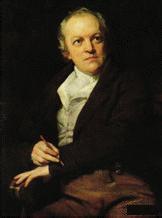 William
Blake (1757-1827) William
Blake (1757-1827)
 Blake's
major works or writings: Blake's
major works or writings:
The William Blake
Archive (poetry and paintings)
The William Blake Page
(poetry and paintings)
Collected Works
Selected Poems
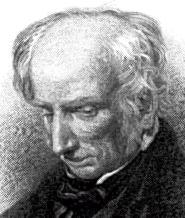 William
Wordsworth (1770-1850) William
Wordsworth (1770-1850)
As with many English intellectuals,
Wordsworth as a young man was enthusiastic about the French Revolution
(1789) at least in its early stages. In 1791 he journeyed to France to
witness this grand event. But as time passed, and as the Revolution
turned bloodier and more vindictive and aggressive, he became distrustful
of the Revolution.
As a Romantic, he became
more enamored with the pathos of individual human life, especially the
nobility of the deeper human emotions – and less sure about the utility
of the rationally ordered society.
 Wordsworth's
major works or writings: Wordsworth's
major works or writings:
Lyrical Ballads
(1798)
Written in cooperation with Coleridge – and considered the beginning of
the
Romanticist movement in England.
The Excursion
(1814)
The White Doe of Rylstone
(1815)
Ecclesiastical Sonnets
(1822)
The Prelude
(1850)
An autobiography started a half-century earlier – though not published as
a
completed work until after his death
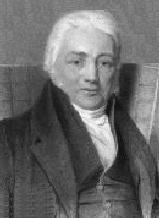 Samuel
Taylor Coleridge (1772-1834) Samuel
Taylor Coleridge (1772-1834)
 Coleridge's
major works or writings: Coleridge's
major works or writings:
Biographia
Literaria (1817)
Selected Poetry and Prose
of Samuel Taylor Coleridge
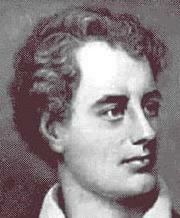
George
Gordon Noel, Lord Byron (1788-1824)
A profoundly moody English Romantic
writer, he was considered by many of his English contemporaries to be almost
insane. He finally left England in 1816 to live on the European continent
as an English expatriate (he never returned). He wrote of individuals
who suffered deeply from the cruelties of society, heroizing the individual
who dared to stand on his own.
 Byron's
major works or writings: Byron's
major works or writings:
Childe Harold's
Pilgrimage (1812)
The Prisoner of Chillon(1816)
Don Juan (1821)
Selected Poetry and Prose
of George Gordon, Lord Byron
Selected Poems of Lord
Byron
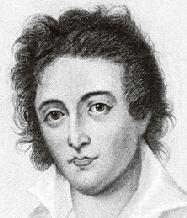
Percy
Bysshe Shelley (1792-1822)
A Romantic "non-conformist"
with a disdain for the conventional social mores of his times (he was expelled
from Oxford University for publishing a work, "The Necessity of Atheism").
A very productive poet who authored numerous odes from the time he was
26 until just before his 30th birthday when he drowned in sailing accident
during a storm.
 Shelley's
major works or writings: Shelley's
major works or writings:
"The Necessity
Of Atheism" (1811/1813)
Prometheus Unbound
(1820)
In Defence of Poetry
(1822)
Complete Poetical Works
of Percy Bysshe Shelley
Selected Writings
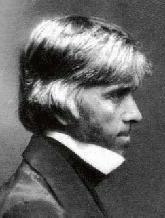 Thomas
Carlyle (1795-1881) Thomas
Carlyle (1795-1881)
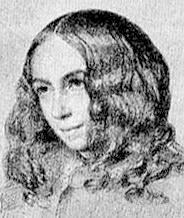 Elizabeth
Barrett Browning (1806-1861) Elizabeth
Barrett Browning (1806-1861)
 E.B.
Browning's major works or writings: E.B.
Browning's major works or writings:
An Essay on
Mind (1826)
Prometheus Bound
(1833)
The Seraphim and Other
Poems (1838)
The Cry of the Children
(1842)
Sonnets from the Portuguese
(1845-1850)
Aurora Leigh
(1857)
Poems Before Congress
(1860)
 Alfred,
Lord Tennyson (1809-1892) Alfred,
Lord Tennyson (1809-1892)
English Poet Laureate, 1850-1892.
 Tennyson's
major works or writings: Tennyson's
major works or writings:
Poems, by
Two Brothers (1827)
Poems, Chiefly Lyrical
(1830)
Poems (1833)
Poems (2 vols
1842)
The Princess, a Medley
(1847)
In Memoriam
(1850)
Maud (1855)
The Idylls of the
King (a continually expanding collection: 1859-1885)
Tithonus (1860)
Enoch Arden
(1864)
Lucretius
(1868)
Queen Mary
(1875)
Harold (1876)
The Falcon
(1879)
Ballads and Other
Poems (1880)
The Cup (1881)
The Promise of May
(1882)
Becket (1884)
Tiresias, and Other
Poems (1885)
Locksley Hall, sixty
years after (1886)
Demeter, and other
poems (1889)
The Death of ÃÂnone,
and other Poems (1892)
The Foresters
(1892)
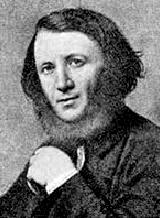 Robert
Browning (1812-1889) Robert
Browning (1812-1889)
 Robert
Browning's major works or writings: Robert
Browning's major works or writings:
Paracelsus
(1835)
Sordello (1840)
Dramatic Lyrics
(1842)
Dramatic Romances
and Lyrics (1845)
A Soul's Tragedy
(1846)
Christmas Eve and
Easter Day (1850)
Men and Women
(2 vol. collection of poems, 1855)
Dramatis Personae
(1864)
The Ring and the Book
(1868)
Dramatic Idyls
Asolando (1889)
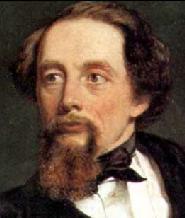 Charles
Dickens (1812-1870) Charles
Dickens (1812-1870)
English novelist.
 Dickens'
major works or writings: Dickens'
major works or writings:
Sketches by
Boz (1836)
The Pickwick Papers
(1837)
Oliver Twist
(1837-1839)
Nicholas Nickleby
(1838-1839)
The Old Curiosity
Shop (1840-1841)
Barnaby Rudge
(1841)
American Notes
(1842)
Martin Chuzzlewit
(1843-1844)
A Christmas Carol
(1844)
The Chimes
(1844)
The Cricket and the
Hearth (1845)
Pictures From Italy
(1846)
Dombey and Son
(1847-1848)
Battle of Life
(1848)
The Haunted Man
(1848)
David Copperfield
(1849-1850)
Bleak House
(1852-1853)
Hard Times
(1854)
Little Dorrit
(1855-1857)
The Frozen Deep
(with Wilkie Collins, 1856)
A Tale of Two Cities
(1859)
Great Expectations
(1860-1861)
Our Mutual Friend
(1864-1865)
The Mystery of Edwin
Drood (1869-1870)
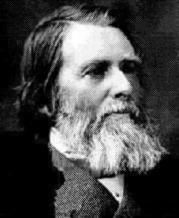 John
Ruskin (1819-1900) John
Ruskin (1819-1900)
An English philosopher in search
of an uncerstanding and definition of beauty (aesthetics).
 Ruskin's
major works or writings: Ruskin's
major works or writings:
The Seven
Lamps of Architecture
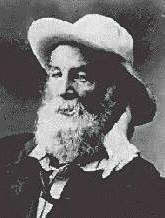 Walt
Whitman (1819-1892) Walt
Whitman (1819-1892)
 Whitman's
major works or writings: Whitman's
major works or writings:
|
|
Ralph
Waldo Emerson (1803-1882)
 Emerson is best known as leader
of the "transcendentalist" movement in America. Emerson is best known as leader
of the "transcendentalist" movement in America.
He was born into a prominent
Boston family, one characterized by generations of service to the church
(his father, William, was the minister of the venerable First Church of
Boston). He attended Harvard College and Divinity School and eventually
became pastor of the 2nd church of Boston – where he soon achieved recognition
as an excellent preacher.
But like his father before
him, he found himself being drawn into new realms of thought that challenged
his orthodox Christian beliefs. The writings of the English romantics,
Carlyle and Coleridge, the philosophy of Swedenborg, the new biblical text-criticism
coming out of Germany, plus his own cool intellectual rather than warm
pastoral nature began to distance him emotionally from his work.
Soon after his wife died
in 1831, he stepped down from the ministry (1832) – to freely pursue the
question of the nature and purpose of human life – and its relation
to the larger natural world around man. He traveled to Europe, visiting
Coleridge, Wordsworth and Carlyle in the process. When he returned
to the States in 1833, he began work on his small, but revolutionary book,
Nature – which
he published anonymously three years later. In this book he outlined
the basic ideas that underpinned his Transcendalist philosophy.
Basically he took the ancient
Idealist position of Plato – in strict opposition to the mechanistic-materialist
philosophy of Newton and Locke which he saw as undergirding modern life
(including the Unitarian theology that was so prevalent around him).
He was in part a mystic (in keeping somewhat with the older Puritan tradition!) – seeking
direct knowledge of God through divine revelation, rather than through
systematic theology or rational philosophy.
He felt that Newton had imprisoned
the human spirit within his model of life as a machine made up of bits
of matter in motion in accordance to a fixed system of natural laws.
Further, he felt that Locke had only added to this error by depicting the
human mind as a similar machine, linked only to the outside world through
the the bombardment of external sensations upon the receptors of the mind.
This mechanistic-materialistic philosophy was all lacking the force of
spirit, a transcending spirit – which was to Emerson the substance
that gives rise to all life, human and otherwise. To Emerson, this
transcending spirit unites all life into a single harmony which flows from
God – and at the same time is God.
The moral implications of
Emerson's philosophy were in the vast freedoms this spirit seemed to give
man – freedoms to make choices about his own life. To Emerson man
was not a machine, but part of the great flow of the power of God – and
capable of fulfilling the most noble visions endowed by God to the active
human mind/spirit. Indeed, the human spirit was potentially so powerful
that it had a proper place in the on-going unfolding of all creation.
The human mind was thus not the victim of a supposedly machine-like environment
around it – but was instead its natural master, inasmuch as man acted in
harmony with that environment.
The Unitarians responded
with denunciations – especially when he brought his ideas before the Harvard
Divinty School in an address to that body in 1838.
Emerson had built up such
a faith in the natural attraction of the human mind to high-minded ideas
that he was a bit taken aback when his ideas failed to persuade – but only
stirred animosity. He learned the hard lesson that reform of human
life was not going to take place just in the presenting of ideas.
There was going to have to be concerted action that accompanied these ideas.
Though Emerson himself would not become an activist-reformer, many of his
close associates in the Transcendalist movement would – especially those
closely involved in the Abolitionist movement (to end slavery in the United
States).
He spent the rest of his
life serving as a lecturer, philosopher and poet – in wide demand on the
lecture circuit, even being called to Harvard to present his ideas.
He was definitely a man of the times, philosopher of the young, optimistic
American Republic which felt that it had a mandate to show the rest of
the world the higher, more humane way to live.

 Emerson's
major works or writings: Emerson's
major works or writings:
Nature
(1836)
Essays: First Series
(1841)
["History," "Self-Reliance," "Compensation," "Spiritual Laws," "Love,"
"Friendship,"
"Prudence," "Heroism," "The Over-Soul," "Circles," "Intellect," and "Art."]
"The Transcendentalist"
Essays: Second Series
(1844)
["The Poet," "Manners," and "Character."]
Poems (1846)
Representative Men
(1850) [lectures]
The Conduct of
Life (1860) ["Power," "Wealth," "Fate," "Culture"]
May Day and Other
Pieces (1867)
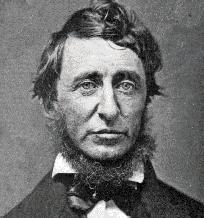 Henry
David Thoreau (1817-1862) Henry
David Thoreau (1817-1862)
 Thoreau's
major works or writings: Thoreau's
major works or writings:
Civil Disobedience
(1849)
Walden: Life in the
Woods (1854)
|
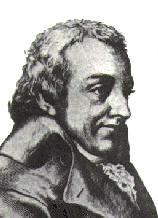 Johann
Gottlieb Fichte (1762-1814) Johann
Gottlieb Fichte (1762-1814)
 Fichte's
major works or writings: Fichte's
major works or writings:
Versuch
einer Kritik aller Offenbarung (1702)
Grundlage der gesammten
Wissenschaftslehre (1794 )
Die Bestimmung des
Gelehrten (1794)
Grundlage des Alaturrechts
(The Science of Ethics) (1796)
Die Bestimmung des
Menschen (1800)
Grundzuege des gegenweirtigen
Zeitalters (1806)
Ueber das Wesen des
Gelehrten (1806)
Reden an die deutsche
Nation (Advice to the German Nation) (1808)
Die Wissenschaftslehre
in ihrem allgemeinen Umrisse (The Science of Knowledge) (1810)
Georg
Wilhelm Friedrich Hegel (1770-1831)

A General Overview
While the English were pushing
ahead an empirical doctrine of evolution through accidental natural causes,
the Germans were developing, through the primary inspiration of Hegel,
an "idealist" doctrine of evolution through the will of some great transcendent
will (the world Spirit). Hegel was clearly a Platonist – seeing all
history, all human events as "guided" by this powerful spirit. This task
of learning or of science was to Hegel (and the Hegelians after him) therefore
not just to collect facts, but to discern the particular movement of this
guiding hand in the midst of such facts.
Hegel was born and educated
in Stuttgart in the classics and attended the University of Tübingen
in preparation for the ministry. During the course of his university
studies he befriended Schelling – and decided against the ministry.
He found work tutoring, first in Switzerland then in Frankfurt. In
1801 he returned to his studies, this time at the University of Jena – where
he eventually became a lecturer, then department head. Here he completed
his first work, Phenomenology of the Mind – just in time to flee
Jena from the approaching French armies (1806).
He briefly turned to journalism
and then became director of a gymnasium in Nuremberg. During
his Nuremberg years (1808-1816) he compiled his Encyclopedia of the
Philosophical Sciences, incorporating his earlier Science of Logic
(1812),
and Philosophy of Nature and Philosophy of Spirit.
In 1816 he became a professor
at the University of Heidelberg; moving two years later to become a professor
at the University of Berlin, where he remained until his death in 1831.
In Berlin he published his Philosophy of Right (1821). After
his death his lecture notes were compiled into a number of publications:
Philosophy of Fine Art (1835-38), History of Philosophy (1833-36), Philosophy
of Religion (1832), and Philosophy of History (1837).
Hegel's Great Influence
on European Philosophy
Hegel was clearly a Platonist – seeing all history, all
human events as "guided" by this powerful spirit. This task of learning
or of science was to Hegel (and the Hegelians after him) therefore not
just to collect facts, but to discern the particular movement of this
guiding hand in the midst of such facts.Hegel and Kant.
For a while Hegel was strongly influenced by the philosophy of Kant –
especially the notion that the real basis of Christianity was not in
the legalistic religious doctrines evolved over the centuries by the
Christian church – but in the inherent moral "Reason" contained in the
teachings and example of Jesus. But ultimately it was not the
"moral reason" of Jesus that inspired Hegel but instead the idea that,
in and through Jesus as revelation of the divine, the Spirit of God had
spoken to the human heart of eternal truths. These were much
loftier and idealistic concepts than Kant's moral principles.The quest for union with God.
At the heart of Hegel’s philosophy was this idea of man’s hunger to
know – and be embraced by – God (or ‘Absolute Spirit’).
For Hegel
Jesus represented the goal for all humans: union with God (bringing a
divine embrace or condition of full love) – a human goal
much loftier than simply a rational understanding of the material world
around us ... which rationalist philosophers (such as Kant) pursued.
Hegel
saw this journey, this quest for full union with God, occurring in all
of life in progressive stages, from the simple to the complex.
This pertained not only to a person’s individual life, but to whole
peoples or nations ... in fact to everything alive in this universe.
For
example in his 1806 work, Phenomenology of the Mind, Hegel focused on
the evolutionary development of human thought, through the stages of
mere consciousness, then self- consciousness, then reason, then spirit
and religion, and finally to absolute knowledge. Here the human
mind comes to know itself as pure spirit – in its union with the pure
spirit of the Absolute. This is what Christianity, as presented
by Jesus, is ultimately all about.Knowledge
of the sense-world (achieved through modern science) around man is only
a starting point for Hegel in the development of human
consciousness. Scientific or rational knowledge standing as the
final goal of human study was to Hegel a false or deceptive completion
of the process of development. Such knowledge regrettably acts
only analytically – separating the objects of knowledge into discreet
categories. It also separates, even isolates, the human Geist
(mind or spirit) from the reality around it. While such reason is
materially useful to human life, it is not itself the highest or
ultimate attainment of the human spirit. That comes in a
process of unification – not separation – of the human consciousness
with the reality around it. Along
the way in the process the human mind passes through several stages of
development: from mere consciousness to a maturer
self-consciousness, to the realm of reason, but then also to the stage
of connection with the larger realm of reality through revealed
religion and its formal declarations, to. The dialectical struggle. Then in 1877, based on his
lecture notes, he published a new ground-breaking work, Encyclopaedia of the Philosophical Sciences in Outline. Undergirding
this work was the motif of struggle (Kampf)
– struggle of the human spirit or mind through various trials to
reach or fulfill itself in a higher union with God. But Hegel
also explained how God, from his side of things, also reached out to
the struggling human spirit ... by becoming himself human (and thus
limited) – to struggle alongside man to overcome the finite human
condition, to help him attain the final stage of complete
self-consciousness - as part of the history of creation.Using
the dialectical method (the step by step evolution of a thought or idea
through the struggle of contradicting propositions in the quest of a
higher level of truth), Hegel outlined how this occurred.
Through this progressive process, God and man (the Absolute and the
Finite) are two juxtaposed players joined in a dialectical process of
reaching toward each other in a process of self-realization. This
process moves both sides to ever higher levels of realization. In
this God is as dependent on man as man is dependent on God for their
mutual realization.This
same dialectical process worked also for whole societies. In his
1821 Philosophy of Right, Hegel was trying to demonstrate through his
dialectical method the path to a just political/social order. On
the one hand society consisted of laws which were necessary for
the good ordering of life. But man also possessed a free
conscience and the obligation to exercise this conscience as part of
his dignity. It was in the struggle to balance the need for a
legal order and a realm of responsible personal freedom that the just
society emerged. The
dangers were always the emergence of not a synthesis between these two
tendencies, but the victory of one tendency over the other: a
legal tyranny or an anarchy of human wilfullness. For Hegel the
closest model for an ideal state was the family and the medieval guild
– there being no such just realm known to him at that time within the
larger political world. His hope was that the urge to justice
would ultimately produce the birth of such a higher political
state.By
the time of his publication of the Philosophy of Right his reputation
was well established in Germany – if not also in all of Europe. A
seat in his lectures was a prized possession for any
student. Careful notes were taken of his lecture s – which
was where his work now was wholly contained. His
interest in the wider realm of philosophy, art, religion, science also
broadened during this time. But overall his work remained the
same: to demonstrate that history was a working out of the will
of God through an ever-heightening human consciousness. Man was
moving into an era of careful human thought – motivated by a deep
devotion to God. The end product for Hegel was indeed the
outworking of the Kingdom of Heaven here on earth ... as the fulfilment
of the promise that Jesus had made so long agoHegel’s
legacy.
German scholarship (indeed much of all European scholarship) after
Hegel was fairly single-minded in this quest of an all-determining
transcendent world Spirit. Things were studied in order to draw
out the hidden pattern of this Spirit – so as to enable man to work in
cooperation with such divine destiny. This
was a powerful idea, forming the underpinning of the revolutionary zeal
of the young reformers of Germany, the "Young Hegelians," who
interpreted Hegel's philosophy as a mandate to work with and for the
World Spirit in bringing about a heightened or evolved cultural
development.This
revolutionary attitude even became part of the Scientific Socialism of
Karl Marx. Marx's philosophy, though its Materialist foundations
were diametrically opposed to Hegel's Idealism, was strongly influenced
by Hegel's idea of a transcending principle moving through
history. In the hands of Marx, this principle directed the
revolutionary course of human life, especially in the stage by stage
development of the economic class-base of society.Inspirer of the rising nationalist spirit in
Germany.
Hegelianism also touched on group pride, as nations or classes
came to see themselves as being under the special anointing of the
world Spirit to take the lead to direct history into the next
era. This fed powerfully into German nationalism, with its sense
of special German historical destiny. This also fed powerfully
into the working class movement which came to view the workers of the
world as the true moral underpinning of the world to come.
 Hegel's
major works or writings: Hegel's
major works or writings:
The Phenomenology
of Mind (or Spirit) (1807)
The Objective Logic
(1812-13)
The Subjective Logic
(1816)
Encyclopedia of the
Philosophical Sciencies (1817,
republished and expanded many times thereafter)
Science of Logic
Philosophy of Spirit
Philosophy of Nature
Philosophy of Right(1821)
Philosophy of Religion
(1832)
History of Philosophy
(1833-36)
Philosophy of Fine
Art (1835-38)
Philosophy of History
(1837)
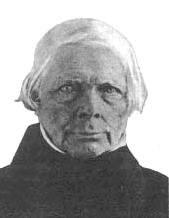 Friedrich
Schelling (1775-1854) Friedrich
Schelling (1775-1854)
 Schelling's
major works or writings: Schelling's
major works or writings:
System of
Transcendental Idealism (1800)
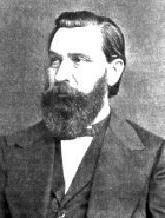 Heinrich
von Treitschke (1834-1896) Heinrich
von Treitschke (1834-1896)
Von Treitschke was a professor
of history and politics in a number of German universities: Leipzig, Freiburg,
Kiel, Heidelberg and Berlin. He was an ardent German nationalist
who glorified war as the process by which the spirit of a people works
itself forward in unity and strength. He looked to the German State,
headed by the autocratic Prussian King, as the leading instrument for the
outworking of the German national will.
He was a member of the German
Reichstag (the popular Assembly) 1871-1884.
 von
Treitschke's major works or writings: von
Treitschke's major works or writings:
History of
Germany in the Nineteenth Century (7
vols)
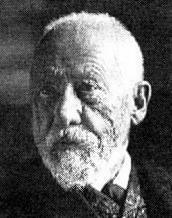 Wilhelm
Dilthey (1833-1911) Wilhelm
Dilthey (1833-1911)
German neo-Hegelian philosopher
 Dilthey's
major works or writings: Dilthey's
major works or writings:
Introduction
to the Human Sciences
Thomas
Hill Green (1836-1882)
Oxford Idealist
 Green's
major works or writings: Green's
major works or writings:
Lectures on
the Principles of Political Obligation
Josiah
Royce (1855-1916)
American Idealist |
|
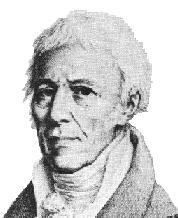
Jean-Baptiste
de Lamarck (1744-1829)
Lamarck took the logic of selective
breeding of animals and hybridization of plants practiced by "enlightened"
European farmers – and surmised that in the long-term this process of passing
on a species' particular strengths to new generations would produce evolutionary
development within the species – and ultimately the creation of new species
themselves.
 Lamarck's
major works or writings: Lamarck's
major works or writings:
Zoological
Philosophy (1809)
Charles
Lyell (1797-1875)
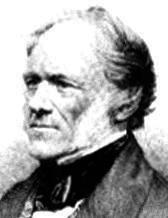
He believed that natural
(not divine) forces and processes went into shaping the various features
of the earth (mountains, valleys, islands, deserts, etc.). He studied
these features directly, climbing, digging, exploring – to observe such
things as the impact of erosion, the action of volcanos. From these
observations he deduced various processes by which mountains were built
up by convulsions in the earth's surface, valleys were cut through the
land, and plains were fashioned from eroded hills and mountains.
He viewed the earth as a
living organism, in a constant state of growth and decay, birth and death.
He extended this vision to the inhabitants of the earth – plants and animals – and
saw such dynamics (growth and decline, birth and death) typical not just
of individuals but of whole species of biological life – of whole families
of plants and animals.
He also estimated that the
earth was possibly millions of years old.
 Lyell's
major works or writings: Lyell's
major works or writings:
Principles
of Geology (1830-33)
The Geological Evidences
of the Antiquity of Man (1863)
Charles
Darwin (1809-1882)

There is no question that the
greatest impact on 19th century thought came from Charles Darwin.
Darwin was a naturalist, a "fact" gatherer, who not only contributed to
our understanding many new details about natural life – but also developed
a hypothesis about why nature seemed to take the shape she did. His
facts seemed to point to the evolution of all living species through a
process of competition for survival which led, by accidental causes, to
"natural selection" or "survival of the fittest." The impact of his
hypothesis on the Western intellect cannot be overestimated – for his theory
still underpins most modern thinking about life today!
But note: Darwin did not
invent the idea of evolution – for it had been a very big element of Western
thought since the on-set of the Enlightenment. The French Revolution
for instance was quite certain that it was about not only social justice,
but also progressive development – growth of human society and the human
intellect.  Darwin's
major works or writings: Darwin's
major works or writings:
The Origin
of the Species (1859)
The Descent of Man
(1871)
The Voyage of the
Beagle
Herbert
Spencer (1820-1903)
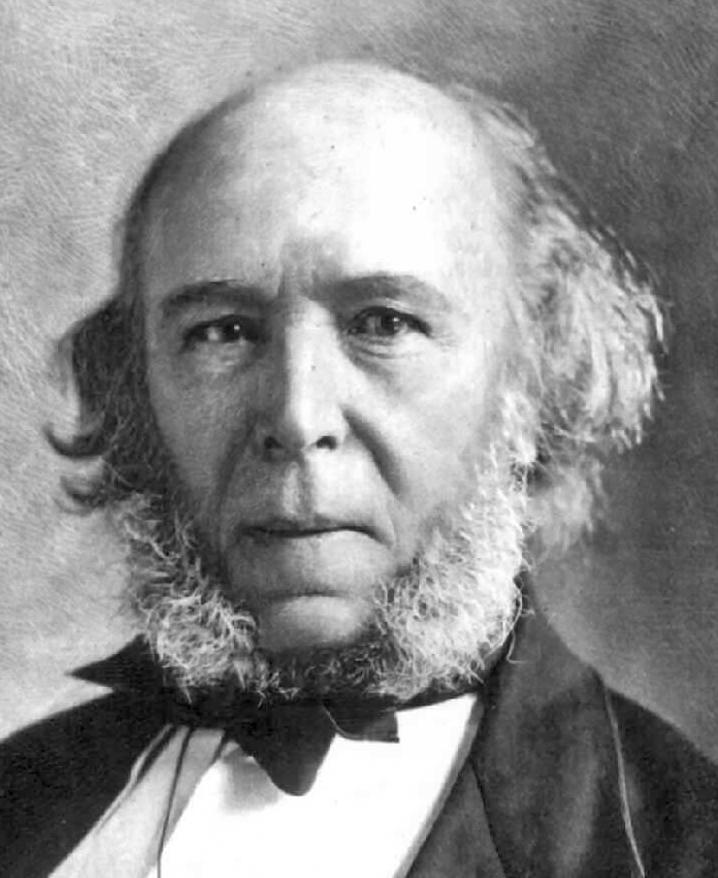
Darwinism
was further buttressed by the writings of other social philosophers of
the day, including notably Herbert Spencer ... who had been moving in
the direction of Darwin’s thinking even before Darwin published his
first work in 1859. Spencer had been working on both social
theory (his 1851 Social Statistics) and personal development theory (his 1855 Principles of Psychology)
... his work heavily influenced not only by Malthus but also by the
theories of Lamarck. Then when Darwin’s work was published in
1859 Spencer came out full force in his support of evolution as the
basic doctrine of life ... in every aspect of life on earth. Soon
Spencer would even outdistance Darwin as the most recognized
philosopher of the late 1800s. But the very names ‘Darwin’ and
‘Darwinism’ would still serve as the most powerful symbols able to
raise strong debate, pro and con ... not only well into the 20th
century but still even today..  Spencer's
major works or writings: Spencer's
major works or writings:
Social Statics
(1850)
Principles of Biology
(1864)
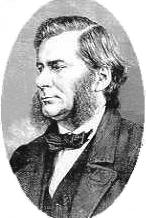
T.
H. Huxley (1825-1895)
T.H. (Thomas Henry) Huxley was
a major developer of the the "agnostic" position with respect to the existence
of God, seeing only "natural" processes in the evolution of biological
life.
 Huxley's
major works or writings: Huxley's
major works or writings:
Man's Place
In Nature (1863)
Practical Biology
(1875)
Agnosticism (A Reply
to Henry Wace) (1889)
Ethics and Evolution
(Romanes Lecture) (1893) Huxley distances himself from the position
that human morality must mirror the doctrine of "survival of the fittest,"
claiming that there is no serious connection between the violence of biological
or physical evolution over the aeons and the universality of moral principle.
|
|
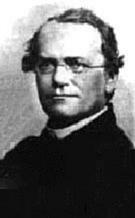
Gregor
Mendel (1822-1884)
An Augustinian monk/teacher
in Austria. Mendel studied plants, in particular the ordinary pea,
in order to detect the ways in which traits of parents are passed on to
their offspring through principles of heredity. In 1865 he presented
his findings – only to discover that his biological theories ran counter
to the environmental theories of natural selection of the rising group
of Darwinists. It was not until after his death that his theories
came to light again – and eventually he became recognized as the founder
of the science of genetics.
 Mendel's
major works or writings: Mendel's
major works or writings:
Treatises
on Plant Hybrids (1865)
Ivan Petrovich
Pavlov (1849-1936)
Pavlov is famous for his explanation
of the "conditioned response," worked out in his experiements (late 1800s)
with dogs – but extended in theory also to human behavior. By associating
the ringing of a bell with the presenting of food to a dog, the dog came
eventually to salivate not just in the presenting of food but eventually,
as a result of "conditioning" even to the sound of the bell in itself – even
without food being present.
|
|
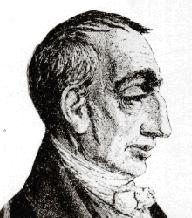
Henri
de Saint-Simon (1760-1825)
 Saint-Simon's
major works or writings: Saint-Simon's
major works or writings:
Lettres d'un
habitant de Genève ÃÂ ses contemporains (Letters of
an
Inhabitant of Geneva to His Contemporaries)
(1803)
De la réorganisation
de la société européenne (On the Reorganization
of
European Society)
(1814)
L'industrie
(Industry)
(1816-1818, with Auguste Comte)
Nouveau Christianisme
(The New Christianity)
(1825)
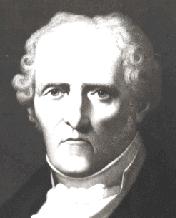 Charles
François-Marie Fourier (1772-1837) Charles
François-Marie Fourier (1772-1837)
 Fourier's
major works or writings: Fourier's
major works or writings:
Théorie
des quatre mouvements et des destinées générales
(The Social
Destiny of Man; or, Theory of the Four Movements)
(1808)
Traité
de l'association agricole domestique (Treatise on Domestic Agricultural
Association)
(1822)
Le
Nouveau Monde industriel (The New Industrial World)
(1829-1830)
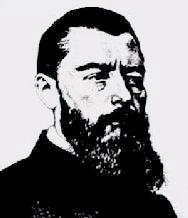
Ludwig
Feuerbach (1804-1872)
German materialist; claimed
that religion was merely a projection of the human ego to give hope to
human dreams.
 Feuerbach's
major works or writings: Feuerbach's
major works or writings:
The Essence
of Christianity (1841)
The Philosophy of
the Future (1843)
The Essence of Religion
(1853)
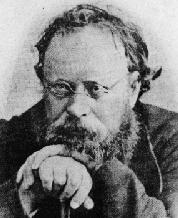 Pierre-Joseph
Proudhon (1809-1865) Pierre-Joseph
Proudhon (1809-1865)
Karl
Marx (1818-1883)
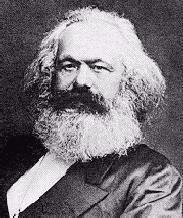
In typical German fashion, the
sociologist Karl Marx picked up on Hegelian Idealism to project a special
destiny for the European working classes.
But Marx moved more to the
middle ground between Hegel and Darwin in projecting how the working classes
would come to power. Not by accident (as per Darwin) nor by some
unseen spirit (as per Hegel) but through the necessary logic of the forces
of production: the world belonged to those who owned the material forces
of production (factories, mines, etc.). The industrial workers would
inevitably wield the power of their vastly greater numbers, to seize the
forces of production from the liberal entrepreneurs and institute a new
society based on worker values – where all would live voluntarily and communally
(owning no property but sharing everything in common) according to a high
spirit of brotherly love. Thus communism or Marxism was born. 
 Marx's
major works or writings: Marx's
major works or writings:
Communist
Manifesto (1848)
Capital (Volume I: 1867)
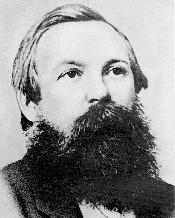 Friedrich
Engels (1820-1895) Friedrich
Engels (1820-1895)
 Engels'
major works or writings: Engels'
major works or writings:
Principles
of Communism
The Origin of the
Family, Private Property and the State
Ludwig Feuerbach and
the End of Classical German Philosophy
On the History of Early
Christianity
Anti-Dühring
Sidney
Webb (1859-1947)
 Webb's
major works or writings: Webb's
major works or writings:
|
ARCHEOLOGY, CULTURAL HISTORY, ANTHROPOLOGY AND SOCIOLOGY |
Jean
François Champollion (1790-1832)
The French archeologist who
translated the Rosetta stone found in Rashid (Rosetta) Egypt (publishing
his work in 1822) – and was thus able to provide a system for translating
ancient Egyptian hieroglyphics, which since ancient times had remained
largely a mystery.
On the stone itself was a
priestly decree written around 196 BC – in three parallel scripts:
ancient Egyptian hieroglyphic, Egyptian demotic (language of the common
Egyptian around 196 BC) and Greek (language of the Ptolemaic dynasty ruling
Egypt at that time). By first detecting royal names he was able to
identify a dozen of the hieroglypic symbols – and then slowly begin to work
from there in identifying yet other ancient Egyptian names and titles.
Eventually this opened up understanding to even more of the hieroglypics
until the full hieroglyphic text could be read.
Jakob
Christoph Burckhart (1818-1897)
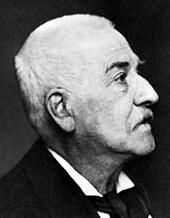
A Swiss historian who, in his
study of Renaissance Italy, established many of the cannons of modern cultural
history.
Though he was the son of
a Protestant pastor and was sent off to school to become a pastor himself
(though receiving much education in the classics along the way) he eventually
abandoned these plans – and took up the pantheistic vision of life characteristic
of many of the members of the romantic movement.
A love for classic art and
architecture eventually translated itself into a fascination for the Italian
Renaissance, which he studied up close through regular travels to Italy.
Over time he withdrew himself from the political romanticism of his colleagues,
becoming less and less confident that modernism was going to produce
a civilization as high as that of the classic and renaissance past.
His life as a teacher at the University of Basle was quiet and unexceptional.
It was, instead, the publication in 1860 of his study of Renaissance Italy
that brought his name to public notice. This study of Renaissance
art and culture was unparalleled – and long remained (even well into the
20th century) the standard study on the subject.
 Burckhart's
major works or writings: Burckhart's
major works or writings:
Die Zeit Konstantins
des Grossen (The Age of Constantine the Great)
(1853)
Die Kultur der Renaissance
in Italien (The Civilization of the Renaissance in
Italy)
(1860)
Griechische Kulturgeschichte
(History of Greek Culture)
(edited posthumously:
1898-1902)
Heinrich
Schliemann (1822-1890)

German archeologist who discovered
the locations of ancient Troy and Mycenae, the main settings for
the ancient Homeric epic, the Iliad.
As a youth he was fascinated
with the Homeric legends and wanted to go to these places to see them for
himself. But he was told that the places were entirely mythical,
the product of ancient imaginations. Nonetheless he remained committed
to his hope.
He proved to be very able
in both languages (he mastered over ten languages) and commerce (he worked
his way up from errand boy to a master speculator in the movement of industrial
and military materials). Once he had established himself in the world
of wealth (he was nearly 50 at that time) he then devoted himself to following
his youthful dream.
In 1871, using Homer's descriptions
of Troy and the area around the ancient city, he decided that the description
fit a hill in northwestern Turkey at Hissarlik. There indeed he uncovered
the ancient city of Troy (though the treasures he brought out as "Priam's
treasures" actually belonged to a Trojan culture many centuries older than
Priam's).
He then in 1874 turned his
attentions to Greece, to Mycenae, the supposed site of the ancient palace
of Agamemnon, the leader of the Greek expeditionary army during the times
of the war with Troy. Here too he uncovered graves and considerable
wealth which he supposed to be Agamemnon's (actually it too belonged to
an older culture).
Overall, he convinced the
world to pay closer attention to ancient mythology – to understand that
though the accounts themselves seemed entirely fantastic by our standards,
nonetheless they were stories that ultimately had their basis in some kind
of "historical fact."
E. B.
Taylor (1832-1917)
E.B. (Edward Burnett) Taylor
was the coiner of the term "animism" (belief in individual souls or anima
in all things, even trees and mountains), which he posited as the
first stage of religious evolution.
 Taylor's
major works or writings: Taylor's
major works or writings:
Anahuac
(1861)
Researches into the
Early History of Mankind (1865)
Primitive Culture
(1871)
William
Robertson Smith (1846-1894)
Cultural evolutionist: studied
the historical stages of development of the belief system of a people.
 Smith's
major works or writings: Smith's
major works or writings:
Lectures on
the Religion of the Semites (1889)
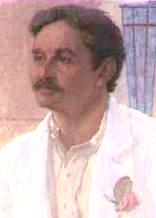
Arthur
Evans (1850-1941)
English excavator of the ancient
bronze age culture of Crete – which he named "Minoan" after the ancient
myth about King Minos of Crete and his fabulous bull held deep within the
labyrinth of his underground palace. At Knossos, the ancient capital of
this culture, Evans reconstructed the palace to look closely like the original.
Purists later would criticize his tampering with the archeological evidence
with his reconstructions. But at the time this was quite a novel
approach to archeology – and was viewed as quite helpful in bringing the
past to life again.
Flinders
Petrie (1853-1942)

English archeologist – considered
the "father" of modern Egyptology. His focus was on gathering information
about the past, not its material riches or treasures, or even museum-worthy
show items (which had been pretty much the goal of archeology until his
time).
He began as a surveyor of
the pyramids and then progressed to excavator – working to uncover various
layers of ancient Egyptian history. He kept careful records of all
his diggings, and considered all finds, no matter how small, to be of important
historical significance. He developed a system of typologies for
pottery, arranging them according to the time periods in which they typically
appeared across the ancient Egyptian cultural landscape, which could then
help to identify the different historical layers as they were exposed in
his diggings.
ÃÂmile
Durkheim (1858-1917)
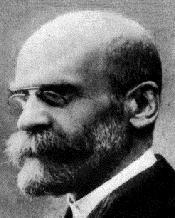
Durkheim was the first Chair
of Sociology, at the Sorbonne in Paris. Indeed, he is considered
the father of modern sociology.
He studied societies not
from the point of view of their relative development in comparison with
other societies – but from the point of view of their own functionality:
how well they worked as societies. In particular, he was interested
in how each society, through the working of its various social "organs,"
met the tasks of socializing its own members. His approach laid out
the groundwork for the functionalist school of sociology or anthropology.
Durkheim put forth the view
that individual humans are strongly influenced by the collective conscience
of the society they grow up in. This collective conscience is more
than merely the sum of all the individual members making up society – but
has its own existence which provides continuity and cohesiveness for society.
Suicide results when individual members are not able to integrate successfully
with that collective conscience – when they suffer "anomie."
 Durkheim's
major works or writings: Durkheim's
major works or writings:
De la division
du travail social (The Division of Labor)
(1893)
Les règles
de la méthode sociologique (Rules of Sociological Method)
(1895)
Le suicide (Suicide:
A Study in Sociology)
(1897)
Pragmatism and Sociology)
(1914)
Les formes élémentaires
de la vie religieuse (Elementary Forms of Religious
Life)
(1915)
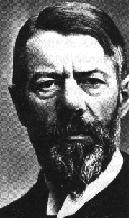 Max
Weber (1864-1920) Max
Weber (1864-1920)
 Weber's
major works or writings: Weber's
major works or writings:
The Protestant
Ethic and the Spirit of Capitalism
|
THEOSOPHY AND RELIGIOUS SYNCRETISM |
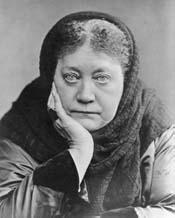 Helena
Petrova Blavatsky (1831-1891) Helena
Petrova Blavatsky (1831-1891)
 Blavatsky's
major works or writings: Blavatsky's
major works or writings:
Isis Unveiled:
A Master-Key to the Mysteries of Ancient and Modern Science
and Theology. (2 vols -1877)
The Secret Doctrine:
The Synthesis of Science, Religion, and Philosophy.
(2 vols -1888)
The Key to Theosophy
(1889)
|
|

Søren
Kierkegaard (1813-1855)
Though Kierkegaard was most
definitely a 19th century individual, his work and legacy had to wait well
into the twentieth century until it had its great impact within philosophical
circles.
 Kierkegaard's
major works or writings: Kierkegaard's
major works or writings:
Enten – Eller (Either/Or) 2 Vols - 1843
|
CHRISTIANITY ON THE
DEFENSIVE |
PART ONE:
CATHOLIC/ANGLICAN CONSERVATISM
Joseph
de Maistre (1754-1821)
ultramontanist
 de
Maistre's major works or writings: de
Maistre's major works or writings:
Essai sur
le principe generateur des constitutions politiques et de autres
institiutions
humaines (Essay Concerning the General Principle of Political
Constitutions
and of Other Human Institutions) (1803-1817)
Lettres sur l'Inquisition
(1815)
Du pape (On
the Pope)
(1819)
Les Soirees de Saint-Petersbourg
(Evening
Parties of Saint Petersburg)
(1821)
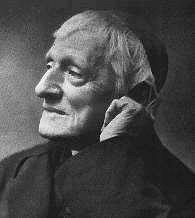
Cardinal
John Henry Newman (1801-1890)
Co-founder (with Richard Hurrell
Froude and John Keble) of the Oxford Movement and publisher of Tracts
for the Times (1833 and after). But he came to question the true
catholicity of the Church of England (announced in Tract 90) and converted
to Catholicism in 1845. He became cardinal in 1879
 Newman's
major works or writings: Newman's
major works or writings:
Apologia pro
Vita Sua (autobiography) (1864)
Tracts for the Times,
No. 1
Tracts for the Times,
No. 2
Tracts for the Times,
No. 3
Tract Ninety
(1841)
Essay on the Development
of Christian Doctrine (1845)
Edward
Bouverie Pusey (1800-1882)
Pusey took over leadership of
the Anglo-Catholic movement (in 1845 after Newman's defection). He claimed
that the movement involved the restoration of true "primitive Christianity."
Henry
Edward Manning (1808-1892)
Converted to Catholicism in
1851; an extreme ultra-montanist; became cardinal in 1875
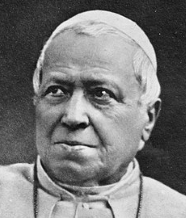 Pope
Pius IX (pope: 1846-1878)
Giovanni
Maria Mastai Ferretti (1792-1878) ... the longest reigning pope.
Pius started out as a very Liberal pope, pardoning and freeing
political prisoners in his first year as pope. But he soon found
himself strongly opposed to the Revolutions of 1848, which shook all of
Western Europe deeply. Pressure was on him to join the effort led
by Albert of Sardinia to force the Austrians out of northern
Italy. But Pius did not want to get involved in any
war. This decision undercut deeply his popularity at a time
of rising nationalism among the Italians.
Then calls were made
for his to reform the operation of the Papal States themselves
(still quite extensive in size in middle and northeastern Italy) ...
something that Liberals had long been demanding. His hesitancy
merely undercut further his national popularity.
Finally, he was forced
to grant a constitution for a two-chamber parliament to assist him
govern the Papal States. Little by little he was losing the
reputation among the Italians.
Briefly Rome was taken
over by revolutionaries who attempted to convert the Papal States into
a Roman Republic ... in the hopes that this would be the first step in
the establishment of a fully national Italian state. But French
troops were sent to Italy and quickly shut down the new republic. And
thus the Papal States were returned to papal governance.
The Papal States would
remain as such until 1860 ... when Victor Emmanuel II of the rising
Sardinian kingdom was able to bring under his royal control all of the
Papal States - except Rome and Rome’s surrounding Latium region - in
his effort to create a unified Kingdom of Italy. Then in 1870, as
a result of a plebiscite held on the issue, a huge majority voted that
even that remaining portion would be taken from the papacy and included
as part of the Kingdom of Italy. From that point on, Pius
considered himself a “prisoner of the Vatican.”
Pius never would
recognize the right of the Italian kingdom to exist ... and
excommunicated its leaders, including King Victor Emmanuel.
Indeed, the papacy would continue to refuse recognition of the Kingdom
of Italy ... all the way up until 1929 - when Mussolini and Pope Pius
XI signed the Lateran Treaty, the papacy receiving reparations payments
for the loss of its territory to the Italian state ... and the
recognition of Vatican City as an independent mini-state within the
city of Rome. (a fifth of a mile or half of a kilometer squared in
size).
Notable during his
reign was the declaration of the dogma of the Immaculate Conception
(1854), the Syllabus of Errors (1864), and the gathering of the First
Vatican Council (1869-1870) in which the doctrine of papal
infallibility was declared.
 Pius
IX's major works or writings: Pius
IX's major works or writings:
Ineffabilis
Deus (1854) [the immaculate conception of the virgin]
Syllabus of Errors(1864)
Vatican I
(1869-1870)
Papal infallibility
(1870)
Pope Leo
XIII (pope 1878-1903)
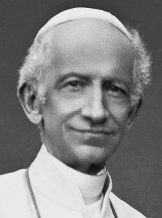 Giaocchino
Vincenzo Raffaele Luigi Pecci (1810-1903). He was born of a noble
Italian family (and his older brother Giuseppe also a prominent
Catholic official), Jesuit trained, and early on a vital part of the
Vatican’s diplomatic service. As pope, he no longer had the
responsibilities of the Papal States to concern him. But instead
he turned his political thoughts to matters of social justice for the
common worker and family. He was opposed to both Socialism and
unregulated Capitalism ... supporting both trade union rights and
personal property rights. And he was an excellent diplomat,
bringing the Catholic church back into the graces of surrounding
European powers. Italy, however, remaining as a papal problem ...
especially as to papal appointment to certain church positions ... as
the Austrian emperor and now the Italian monarchy felt that this was
its right to do so.
Leo also continued to follow the theological direction set out by his
predecessor, Pius IX ... affirming Mary as “mediatrix” in the
relationship between the believer and Jesus. He also stressed the
importance (by way of eleven encyclicals he issued!) of the Rosary ...
a prayer employing rosary beads to help keep correct count of the ten
elements of the prayer ... or ten “Hail Marys.” And he too
stressed the importance to the Church of the Thomast legacy.
He also stressed the importance of reviving the theology of Thomas
Aquinas ... to the point of making it the official theological
foundation of the Catholic Church. Giaocchino
Vincenzo Raffaele Luigi Pecci (1810-1903). He was born of a noble
Italian family (and his older brother Giuseppe also a prominent
Catholic official), Jesuit trained, and early on a vital part of the
Vatican’s diplomatic service. As pope, he no longer had the
responsibilities of the Papal States to concern him. But instead
he turned his political thoughts to matters of social justice for the
common worker and family. He was opposed to both Socialism and
unregulated Capitalism ... supporting both trade union rights and
personal property rights. And he was an excellent diplomat,
bringing the Catholic church back into the graces of surrounding
European powers. Italy, however, remaining as a papal problem ...
especially as to papal appointment to certain church positions ... as
the Austrian emperor and now the Italian monarchy felt that this was
its right to do so.
Leo also continued to follow the theological direction set out by his
predecessor, Pius IX ... affirming Mary as “mediatrix” in the
relationship between the believer and Jesus. He also stressed the
importance (by way of eleven encyclicals he issued!) of the Rosary ...
a prayer employing rosary beads to help keep correct count of the ten
elements of the prayer ... or ten “Hail Marys.” And he too
stressed the importance to the Church of the Thomast legacy.
He also stressed the importance of reviving the theology of Thomas
Aquinas ... to the point of making it the official theological
foundation of the Catholic Church.
 Leo
XIII's major works or writings: Leo
XIII's major works or writings:
Encyclical (1891)
[Mary as the mediator between the Christian and Christ]
|
|
PART TWO:
PROTESTANT LIBERALISM AND BIBLICAL CRITICISM
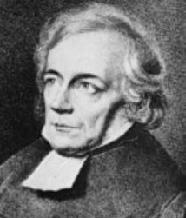
Friedrich
Schleiermacher (1768-1834)
In his early years he stressed
the importance of faith as being the inner work of the spirit of Christ – a
spirit which when formalized into the fixed dimensions of scripture was
crippled. However, his Leben Jesu (published posthumously in 1864)
attempted to distill the essential or "historical" Jesus from the Scriptural
record – resulting in itself a formalized (Liberal) picture of Jesus.
 Schleiermacher's
major works or writings: Schleiermacher's
major works or writings:
Reden über
die Religion (Religion: Speeches
to Its Cultured Despisers) 1799
The Christian Faith
(1821-22)
Leben Jesu
(1864)
Ferdinand
Christian Bauer (1792-1860)
German Idealist. Used
the Hegelian dialectic to describe the development of 1st century theology
and writings (the NT): 1) the Jewish Christian "thesis" confronts
2) a Gentile or pagan Christian "antithesis" to 3) produce a second-generation
Catholic Christian "synthesis." He concluded (wrongly) that this
permitted him to date NT writings according to where they fit into this
"development."
 Bauer's
major works or writings: Bauer's
major works or writings:
Paulus der
Apostel Jesu Christi (1845)
David
Friedrich Strauss (1808-1874)
Strauss took Schleiermacher's
quest for the historical Jesus forward – employing rationalistic criteria
for distilling such a Jesus from the agendas of the first- century Church;
the result was a largely secular-liberal image of Jesus as the wise teacher
 Strauss'
major works or writings: Strauss'
major works or writings:
Leben Jesu
(1835-1836)
Albrecht
B. Ritschl (1822-1889)
 Ritschl's
major works or writings: Ritschl's
major works or writings:
The Christian
Doctrine of Justification and Reconciliation (3 vols.: 1870-1874)
History of Pietism
(3 vols.: 1880-1886) [a disapproving account of pietism]
Ernst
Renan (1823-92)
 Renan's
major works or writings: Renan's
major works or writings:
La vie de
Jesus (1863)
Julius
Wellhausen
 Wellhausen's
major works or writings: Wellhausen's
major works or writings:
Die Composition
des Hexateuchs (1885; from essays: 1876-1877) In this work, he
carried forward the work of Jean Astruc (previous century) in clearly laying
out the evidence of multiple authorship of the 1st six books of the Jewish
Scriptures or Old Testament: the "documentary hypothesis."
Israelitische und
Jüdische Geschichte In this work, he posited the religious
development of Israel (in a Hegelian evolution) from primitive Yahwism
of the people, through a refinement by the prophets, to a codification
by post-exilic priests of a monotheistic system. Also, the Psalms
and wisdom literature he dated from post-exilic times – possibly even the
Maccabean period.
Adolph
von Harnack (1851-1930)
 von
Harnack's major works or writings: von
Harnack's major works or writings:
Das Wesen
des Christentums (1899-1900) In this work he removed the
eschatological aspects of the coming Kingdom – at least from the Last Days
with its awful judgment of angels and demons, of principalities and powers – to
an already-present spiritual rule of God within the human soul – focusing
the kingdom on the present (not future) possibilities offered in this earthly
existence.
History of Dogma
(3 vols.: 1886-1889)
What is Christianity?
(from lectures: 1899-1900)
Charles
A. Briggs (1841-1913)
A Union Seminary Professor who
in 1893 was dismissed from the Presbyterian ministry as a result of a heresy
trial relating to his biblical scholarship.
Hermann
Gunkel (1862-1932)
He looked beyond the literary
structure of Scripture itself to the contemporary cultural milieu of the
times in which they were composed – discovering that though the texts may
show a late editing, they reflect cultural practices of much greater antiquity,
evidence that the material is much older than merely the last editing.
Also, he discovered different literary forms or genres which arose out
of different social contexts (Sitz im Leben) – which were formalized over
time into very precise literary formulae. Many of these same forms are
found in the literature of surrounding cultures – giving us an ability to
date their origins more precisely.
 Gunkel's
major works or writings: Gunkel's
major works or writings:
Schöpfung
and Chaos in Urzeit and Endzeit (1895)
Genesis übersetzt
und erklärt (1901)
Wilhelm
Bousset
Jewish apocalyptic was not a
monolithic affair in Christ's times – but was widely variant; Jesus felt
that the coming of the Kingdom (which was immanent) was not of the order
of the particular horror which John the Baptist preached – because of the
very manner in which Jesus delighted in the things of the present age and
the possibilities of harmonious life now among the people; reportings of
Jesus' words to the contrary were so out of character with him that they
more likely reflect the viewpoint of the first century church than Christ
himself.
 Bousset's
major works or writings: Bousset's
major works or writings:
Jesu Predigt
in ihrem Gegensatz zum Judentum (1892)
Wilhelm
Wrede
Claimed that Jesus became "Messiah"
only in the minds of his disciples after his death.
Alfred
Loisy (1857-1940)
Historical criticism and form
criticism seem to imply that Christianity was really only just one of many
competing mystery religions of its times: Jesus who died on the cross was
only another Adonis or Osiris who, having suffered a violent death, returned
to life – to incorporate his mystical devotees into the saving work (immortality
or life eternal) of his own resurrection; indeed, the Christ of Christianity
is essentially the work of the early church. No understanding of the "historical"
Jesus can be drawn from Scripture – as Jesus is lost within the eyewitness
of his early followers.
|
|
PART THREE:
PROTESTANT CONSERVATISM
Archibald
Alexander (1772-1851)
all Scripture is infallible
 Alexander's
major works or writings: Alexander's
major works or writings:
Evidences
of Christianity (1825 and 1836)
A Brief Compend of
Bible Truth
Charles
Hodge (1797-1878)
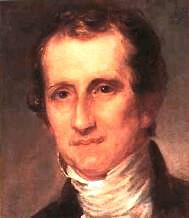
Charles Hodge was born in Philadelphia,
the last of five children. His father died when Charles was only
6 months old and he was raised by his mother (along with another brother
who with Charles were the only children to survive infancy). He attended
the College of New Jersey (Princeton), graduating in 1815. He then
went on in 1816 to attend Princeton Theological Seminary, studying under
Archibald Alexander. He graduated in 1819 and was licensed that fall
to preach in the Philadelphia Presbytery. He briefly served as Presbyterian
pulpit supply before returning the following year at Alexander's invitation
to Princeton to teach biblical languages to seminary students.
He was ordained a Presbyterian
minister in 1821 and in 1822 he came on board the Princeton Seminary faculty
as Professor of Oriental and Biblical Literature. In 1825 he founded
the journal, The Biblical Repertory (later: The Princeton Review)
which he would in time use to propound his theology and his views on Scripure.
From 1826 to 1828 he studied in France and Germany – and then returned to
Princeton to resume his teaching duties.
In 1840 he was moved from
the teaching of biblical languages to the teaching of systematic theology – particularly
as his long-term mentor Alexander began to step down a bit from his heavy
teaching duties. Then in 1851 when Alexander died, Hodge was moved
into place as the full heir-apparent of Alexander. From this position
as chair of systematic theology at Princeton Seminary he waged a strong
defense on behalf of the inerrancy of Scripture against the against the
"low" view of Scripture of Liberal biblical critics and against the assault
on Biblical faith by the Darwinists.
In his long tenure at Princeton
Seminary, he taught more than 2000 seminary students and was instrumental
in shaping the theology of much of 19th century Presbyterian and Reformed
America (which was a quite significant portion of the Christian scene in
the 1800s)
 Charles
Hodge's major works or writings: Charles
Hodge's major works or writings:
Systematic
Theology (1872-1873)
A. A.
Hodge (1823-1886)
A.A. Hodge took the position
in the debate on Scripture – that though errors may occur in translation,
absolute infallibility (inerrancy) exists within the original autograph
of Scripture
 A.A.
Hodge's major works or writings: A.A.
Hodge's major works or writings:
Outlines in
Theology (1860, 1879)
Benjamin
B. Warfield (1851-1921)
 Warfield's
major works or writings: Warfield's
major works or writings:
Inspiration
and Authority of the Bible
Johannes
Weiss (1863-1914)
Weiss was critical of the sweeping
assertions of Biblical criticism. He emphasized that the very nature
of the Kingdom of God as preached by Jesus was such that its transcendental
character, born out of the Jewish tradition, made it very difficult to
scrutinize by humanist or rationalist logic
 Weiss'
major works or writings: Weiss'
major works or writings:
Die Predigt
Jesu vom Reiche Gottes (1892)
|
|
PART FOUR:
EVANGELICALISM
While theologians debated
the finer points of scripture others of the faith went about their business
of being Christian. Christian welfare was still the primary source beyond
the family of care for the sick and the poor.
To some, the evangelicals,
that meant in particular care for the souls of the sick and the poor. Evangelicals
believed that people could be reformed or brought out of their poverty
of body and mind only through the hearing of the gospel of Jesus Christ.
Efforts to reform people through any other means than the power of the
gospel were destined to failure – for the heart had to be converted before
the rest of the person could be brought to health, strength and wisdom.
That meant that their "call"
was to go into the hurting places overseas or in the newly emerging urban
order in the West itself and seek out the poor and sick – to bring them
into their shelters, to be fed and cared for and – most importantly – be
presented with the gospel message of hope.
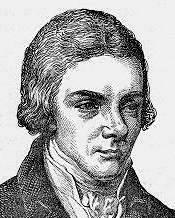
William
Wilberforce (1759-1833)
Personal religious conversion
(1784); dedicated himself to "real Christianity" as opposed to formal Christianity;
Member of British Parliament and leader of the "Clapham Sect" of parliamentary
reformers; fierce opponent of the slave trade; supported missionary work
in India; social reformer of "morals" of the working poor in England.
 Wilberforce's
major works or writings: Wilberforce's
major works or writings:
A Practical
View of the Prevailing Religious System of Professed
Christians(1797)
William
Carey (1761-1834)
Founder of the Baptist Missionary
Society (1792); Baptist missionary to India (1793-1834); translator of
the Bible into various Indian languages; founded schools and agricultural
colleges; opposed widow-burning (sati)
 Carey's
major works or writings: Carey's
major works or writings:
An Enquiry
into the Obligation of Christians (1792)

Charles
Grandison Finney (1792-1875)
Stressed the freedom and power
of the human will to make right or wrong choices – denying the doctrine
of original sin (though in essence he supported the doctrine with the idea
that we are born with "physical" depravity, that is, a tendency to self-gratification)
 Finney's
major works or writings: Finney's
major works or writings:
Lectures on
Systematic Theology (1846-1847)
Systematic Theology
(1878)
Sermons and Articles
Charles G. Finney:
An Autobiography
David
Livingstone (1813-1873)
Scottish explorer and missionary
to Africa: criss-crossed the continent in a series of exploration ventures
1851-1856; 1858-1863; 1866-1873. Advocated commercial and agricultural
development – along with spread of the Gospel – as the Godly obligation of
England to Africa.
 Livingstone's
major works or writings: Livingstone's
major works or writings:
Missionary
Travels and Researches in South Africa (1857)
William
and Catherine Booth
Co-founders of the Salvation
Army out of their tent mission in working class London (1865); severely
criticized for unorthodox methods imitating military discipline as a means
of rehabilitating down-and-outers, morally and physically.
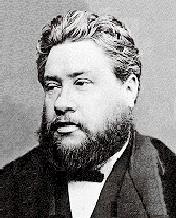 Charles
Haddon Spurgeon (1834-1892) Charles
Haddon Spurgeon (1834-1892)
Victorian and Calvinist Baptist
preacher in London.
 Some
of Spurgeon's major works or writings: Some
of Spurgeon's major works or writings:
All of Grace
"Morning and Evening":
Daily Readings
"Till He Come":
Communion Meditations And Adrresses by C.H. Spurgeon,
1896
Dwight
L. Moody (1837-1899)

A shoe-salesman turned evangelist,
Moody moved from Boston to Chicago to spread the gospel to the poor in
Chicago's "Little Hell." He was instrumental in setting up the YMCA
(Young Men's Christian Association) in the United States as a means of
offering poor working class youth hope for a way out of their poverty – and
then later the YWCA (Young Women's Christian Association). He also
was active in the Sunday School movement.
When the Civil War started
up in 1861, Moody, an ardent abolitionist (but also something of a pacifist),
enlisted as a Union chaplain. But with Union victory he then returned
to Chicago to build support for a large Christian tabernacle that could
gather large numbers of Christians together (Moody himself served only
as a deacon to this independent church).
The Chicago fire of 1871
destroyed his several mission homes and chapels. But he responded
by building the Northside Tabernacle – to help others whose lives had been
crippled by the fire.
Then Moody joined the musician
Ira Shankey to form an evangelical team which took off for England, Scotland
and Ireland on an evangelistic crusade, 1873-1875. The campaign succeeded
in drawing out huge crowds (several million total). (The two would
return to Britain in 1881-1884)
From Britain he and Sankey
returned to the States with the hope of stirring the same kind of revival
fires in this country. As in England, the politically powerful were
glad to join Moody on his platform (President Grant among them).
Here too his campaign was a huge success as he moved from American city
to city – these two great celebrities, drawing huge crowds, touching the
lives of millions of people.
E.M. (Edward)
Bounds (1835-1913)
 Some
of Bound's major works or writings: Some
of Bound's major works or writings:
Power
through Prayer
Purpose
In Prayer
The
Essentials Of Prayer
The
Necessity Of Prayer
Unction:
Heaven's Knighthood
Devotion:
The Heart of Prayer
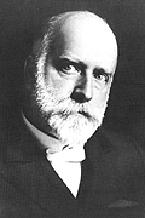 R.A.
(Reuben Archer) Torrey (1856-1928) R.A.
(Reuben Archer) Torrey (1856-1928)
Plymouth Bretheren (Dispensationalist
Pre-millennialism)
 Some
of Torrey's major works or writings: Some
of Torrey's major works or writings:
The Great
Attraction: The Uplifted Christ
The Power of Prayer
How to Be Inexpressibly
Happy
The Day of Golden
Opportunity
How to Deal with Those
Who Have Little or No Concern about Their Souls
Keep Praying Until
God Answers
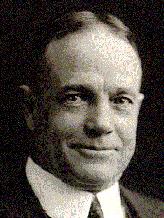 William
Ashley "Billy" Sunday (1862-1935) William
Ashley "Billy" Sunday (1862-1935)
 Some
of Sunday's major works or writings: Some
of Sunday's major works or writings:
When My People
No Longer Fear Me
|
|
PART FIVE:
THE SOCIAL GOSPEL
To others, the Christian
"call" was to dispense mercy and justice on behalf of the poor – pushing
for education, housing and labor reform. Theirs was a "social gospel" which
tended to emphasize the responsibility of the Christian to follow the example
of Jesus in working with the poor in improving their economic and social
conditions. The social gospel tended to work more effectively in inspiring
the Christian worker in his or her charity – than in inspiring the recipient
of that charity. The poor supposedly could not take hold of the gospel
until the economic and social conditions holding them in poverty had been
eliminated. This was in keeping with the Liberal view of environmental – rather
than personal – factors being the source of the human "problem."
Washington
Gladden (1836-1918)
Walter
Rauschenbusch (1861-1918)
|
PART SIX:
MILLENIALISM AND THE "NEW REVELATION" RELIGIONS
The difference between the
evangelical Christian and the social gospel or "liberal" Christian was
closely related to a theological difference that held the 19th century
in fascination: millennialism. Millennialism pointed to the Return of Jesus – as
he had promised almost 2000 years earlier. But there were strong divisions
within millennialism as to exactly how that was to happen.
The pre-millennialists (evangelicals)
felt that Jesus was coming according to God's timing and only after he
came would the millennium arrive in which the world be delivered from sin
and sickness. The task of the Christian was to prepare the world spiritually
(through the propagation of the gospel) for his coming.
The post-millennialists (social
gospel and liberals) believed quite the opposite: that the return
of Christ would come only after the millennium was ushered in – requiring
the faithful to work to rid the world of sin and sickness (build the millennium)
so that the Lord might come.
There were others who felt
that they were living in "prophetic" times. Voices were being heard and
new revelations were being issued from God – which were having the effect
of creating new Christian (or quasi-Christian) movments: 7th Day Adventists
and Mormons in the early part of the century; Christian Scientists and
Jehovah's Witness in the later part of the century.
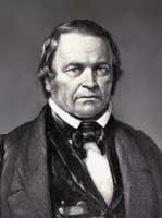
William
Miller (1782-1849)
He was the founder of the "Millerite"
Adventist movement – from which the Seventh-Day Adventists eventually emerged.
Joseph
Smith (1805-1844)
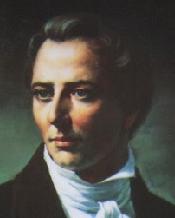
Founder of the Church of Jesus
Christ of the Latter Day Saints (Mormons)As
a teenager Smith had a number of visions, the most important being a
visit by the Angel Moroni, in 1827 who directed him to a place where he
uncovered a book of golden plates on which were written in some form of
‘reformed Egyptian’ the story of the ancient Jews and of Christ and his
visit to America. Using a special technique, he translated what
he saw written there by ancient authors (Mormon being chief among them)
... which in 1830 Smith published in English translation as the Book of
Mormon. That same year he formed his first congregation as
the Church of Christ, teaching his followers the new doctrines, and
then sending them west to spread the new revelation as ‘Latter Day
Saints.’ His
ultimate goal was to establish a new Zion, a community of the Latter
Day Saints to prepare the way for the coming of Christ. At first
he thought it would be in Ohio, where in 1831 a large group of his
followers assembled. But then some of his followers moved on to
Missouri, planning to establish his New Jerusalem or Zion there.
But they ran into trouble when the local citizens reacted to the
Mormons pouring into their area. Smith ran into the resistance of
the local Missouri militia when he arrived in Missouri to try to secure
the land for his followers – and thus he decided to build his temple in
Ohio. But a major bank failure (resulting from the panic of 1837)
undermined the harmony of his followers and Smith migrated with those
who still remained with him back to Missouri ... once again facing
stiff resistance there, except this time organized by the governor of
Missouri who was determined to drive the Mormons from his state.
Thus some eight thousand Mormons followed Smith to Nauvoo, along the
Mississippi on the Illinois side of the river. For
the next few years he was able to proceed in the building of his temple
... until now the citizens of Illinois began to take up arms against
the Mormons. Then in June of that year Smith and his brother
Hyrum were killed by an angry mob ... throwing the Mormon community
into confusion as to who was then to lead them.
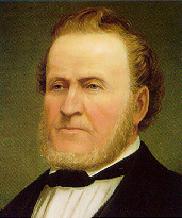 Brigham
Young (1801-1877) Brigham
Young (1801-1877)
Carried Mormonism to Salt Lake
City
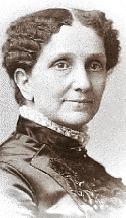 Mary
Baker Eddy (1821-1910) Mary
Baker Eddy (1821-1910)
Founder of Christian Science
 Eddy's
major works or writings: Eddy's
major works or writings:
Science and
Health with Key to the Scriptures (1875)
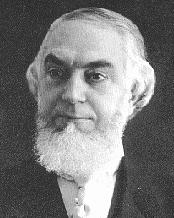 Charles
Taze Russell (1852-1916) Charles
Taze Russell (1852-1916)
Founder of the Jehovah's Witnesses
(late 1870s) |
|
SCIENCE LOOKS FURTHER OUTWARD INTO SPACE |
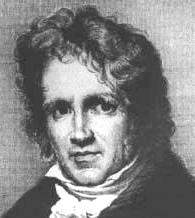 Friedrich
Wilhelm Bessel (1784-1846) Friedrich
Wilhelm Bessel (1784-1846)
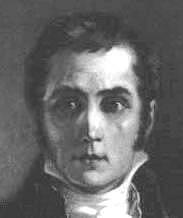 Joseph
von Fraunhofer (1787-1887) Joseph
von Fraunhofer (1787-1887)
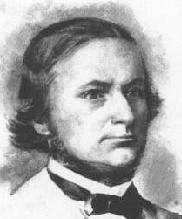 Gustav
Robert Kirchoff (1824-1887) Gustav
Robert Kirchoff (1824-1887)
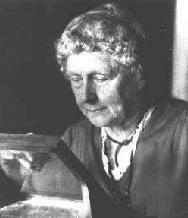 Annie
J. Cannon (1863-1941) Annie
J. Cannon (1863-1941) |
|
SCIENCE INVESTIGATES THE SUBSTANCE OF MATTER AND LIGHT |
John
Dalton (1766-1844)
An English scientist with a
wide range of interests: meterology (especially the aurora), color
blindness (he himself was color blind) and chemistry (the study of gasses).
But unquestionably his greatest contribution is in his development of the
atomic theory of matter. He discovered the atomic weight of various
elements and the way the elements neatly arranged themselves in order by
atomic weight – to form in 1803 the beginnings of the periodic table.
He speculated that the neatly progressive difference in atomic weight of
the elements was not because that constituent atoms were of different weight – but
of different number (on the supposition that the atoms for all elements
were uniform in weight and size).
 Dalton's
major works or writings: Dalton's
major works or writings:
Meteorological
Observations and Essays (1793)
New System of Chemical
Philosophy (2 vols: 1808 and 1810)
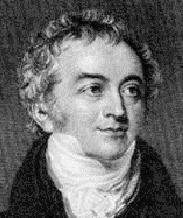
Thomas
Young (1773-1829)
Young performed a "double-slit" experiment with light – projecting light
through two small holes onto a screen. The resultant light patterns
on the screen revealed not two concentrations of light on the screen as
one might expect if light were particles, but an array of concentrations
(interference patterns) that indicated the dynamics of waves.

 Young's
major works or writings: Young's
major works or writings:
"Experiments
on Sound and Light" (Philosophical Transactions of the Royal
Society,
1800)
"On the Theory of Light
and Colors" (Bakerian Lecture 1801)
"Experiments and Calculations
Relative to Physical Optics" (Bakerian Lecture
1803)
Hans Christian
Ørsted
A Danish physicist who discovered
in 1820 that when an electrical current in a wire is varied, it acts to
deflect a magnetic needle placed nearby – indicating a relationship between
electricity and magnetism.
André-Marie
Ampère (1775-1836)
A French mathematician, physicist
and chemist. He was a professor at Bourg in 1801-1809 and afterwards
at the École Polytechnique in Paris. He took up on Ørsted's
work on the relationship between electricity and magnetism in 1820 by giving
mathematical demonstration of this relationship (by 1827 refined into Ampère's
Law).
Ampère
was also a laboratory experimenter who invented a mechanism for measuring
the flow of electricity and discovered or predicted the existence of a
number of different types of electromagnetic waves.
 Ampère's
major works or writings: Ampère's
major works or writings:
Memoir on
the Mathematical Theory of Electrodynamic Phenomena, Uniquely
Deduced from
Experience (1827)
Michael
Faraday (1791-1867)
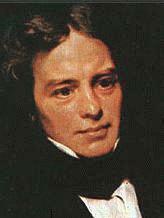
An original thinker whose curiosity
was such that he was not held in check by conventional scientific wisdom
was Michael Faraday (1791-1867). Faraday began his work simply as
a person who loved to probe the working of things, without much concern
as to the larger theoretical or cosmological implications of his research.
No grand intellectual loyalties predetermined his approach to his studies.
As a result, he was to lay many original foundation stones for a newly
emerging, post-Newtonian intellectual edifice.
From his early mentor, Sir
Humphry Davy, Michael Faraday conceived the view (actually formulated in
the previous century by Ruggero Giuseppe Boscovich) that the foundational
nature of elements were not hard substances, but mathematical points surrounded
by fields of positive/negative or attracting/repulsing forces acting
alternatively to produce each element's distinct structural pattern.
It was Faraday's study of
sound
that gave rise to his thinking about how these field forces worked as waves
or symetrically vibrating lines. When powder was placed on an iron
plate which then was vibrated by a violin bow, it formed a regular wave
pattern. He was even more startled to discover that the same wave
pattern could be produced by the powder when the violin bow was drawn across
a neighboring iron plate! These wave patterns could be effected across
a distance.
This led him to thinking
that electrical currents might work in a similar fashion – producing the
"wave" configuration resulting from attractive forces of an on and off
stage of electrical flow. Experiments with magnets and iron filings
suggested that this might be the case. Faraday was surprised in his
experimentation to discover that ending an electrical charge did not merely
produce a return to rest of a galvanometer needle, but produced a negative
reading in the same measure as the positive reading when a wire was charged
with electricity. There seemed to be a natural balance in the rise
and fall of the "wave" of energy set off by an electrical charge.
He drew from his experiments
the conclusion that electricity was caused by tensions created in matter
when such tensions were rapidly built up and then relieved in a rapidly
repetitive fashion, in a wavelike fashion, within a substance. Each
substance had its own level of tolerance for such electromagnetic action.
Some substances, such as copper, were easily impacted by this process – and
were thus good "conductors" of electrical energy. Others were very
resistant to this process – and could even be used as insulators to restrict
or control the flow of electricity.
From this observation Faraday
began to believe that possibly all of the forces of nature were
fields. He dismissed the Newtonian view of all matter as being like
atomic billiard balls knocking into each other to produce motion or life.
Instead he saw "substance" as operating something in the manner of energized
fields – acting not only through substances but also even infinitely across
open space (though with rapidly diminishing impact over any distance).
In an experiment with polarized
light projected through optical glass, he observed that a parallel electromagnetic
field produced in the light a turning or rotation, indicating that light
was affected by the electromagnetic field. But he was startled to
discover that in reversing the direction of the ray of light, the rotation
remained in the same direction with respect to the parallel electromagnetic
field. This pointed to the conclusion that the action on the light
was produced by the field force of the electricity and not by the molecular
structure of the glass. The action had nothing to do with molecules
in the "conductors" (the glass as a conductor of light rays) but with the
nearby electromagnetic fields operating on the light rays.
As he had noticed that magnetism
and electricity – and possible even light – though seemingly different forces,
had the same basic attributes, it was easy for him to speculate that there
was much more of matter that would operate in this fashion. Perhaps
even all matter worked in acordance with this field-force-as-wave
process.
Dmitry
Ivanovich Mendeleyev (1834-1907)
Mendeleyev was a Russian chemist
who attempted to derive the original elements of all substances – that
is the substances that themselves could not be separated further into constituent
components. Then he attempted to classify these elements into an
orderly array. He noticed how the elements arranged themselves in
a natural array according to particular chemical and structural properties – ones
repeated over and over again to reveal an underlying periodic structure.
Using the ideas of John Dalton
concerning atomic weights of the elements, Mendeleyev presented this progressive,
periodic array of the elements in accordance with each element's particular
atomic weight, weight based on the particular number of atoms contained
in each of the separate elements.
There were gaps in his system – but
he predicted (correctly) that these gaps would eventually be filled as
more of the elements were discovered. The system also gave explanation
to various chemical relations in a more comprehensive or systematic fashion – and
was an important step in the direction of explaining (a generation later)
the natural transformation of one element into another through the process
of radioactive decay (the loss of constituent atoms).
 Mendeleyev's
major works or writings: Mendeleyev's
major works or writings:
The Principles
of Chemistry (1868-1870)
James
Clerk Maxwell (1831-1879)
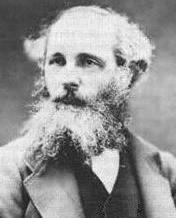
It was James Clerk Maxwell that
in 1873 would give definite proof to Faraday's idea that magnetism, electricity
and light were structured very much alike. Through experimentation
he was able to demonstrate that an electric current moved in a wave pattern
through a wire at the same rate as the known speed of light through space
(186,000 miles per second). This gave powerful evidence that light
and electricity were closely related. Indeed, he claimed that there
were probably all kinds of electomagnetic waves – operating at different
frequencies, well beyond the ones the one that human eye was able to pick
up. Even the waves the eye sees are of slightly different frequency – giving
rise to their color variation. White light was the sum of all light
falling within the frequency range the human eye could detect.
Maxwell's experiments left
questions about how it was that light moved through space. Though
Faraday's work had demonstrated that it was not through molecular action
that light (or electricity) moved, it still seemed to Maxwell to require
some carrying substance, some material "medium" to move light. Maxwell
thus took up the ether theory and tried to erect an explanation of the
movement of light across space, using ether as the medium of light.
 Maxwell's
major works or writings: Maxwell's
major works or writings:
Theory of
Heat (1871)
Treatise on Electricity
and Magnetism(1873)
Matter and Motion
(1876)
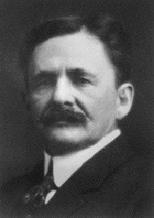 Albert
Michelson (1852-1931) and Edward Morley Albert
Michelson (1852-1931) and Edward Morley
 Michelson's
major works or writings: Michelson's
major works or writings:
Velocity of
Light (1902)
Light Waves and their
Uses (1899-1903)
Studies in Optics
(1927)
George
Fitzgerald
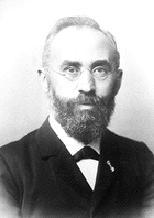 Hendrik
Lorentz (1853-1928) Hendrik
Lorentz (1853-1928)
Heinrich
Hertz (1857-1894)
A German
professor of physics at the Karlsruhe Polytechnic who in the second half
of the 1880s was able to reproduce electromagnetic waves – and study their
particular nature and action as waves. His work with radio waves was his
greatest contribution. He noted that radio waves travelled at the
same speed as light (186,000 miles per second), linking them to the growing
family of electromagnetism/light. He demonstrated that radio
waves, like light, could be reflected, refracted and diffracted.
He then applied this knowledge in transmitting and receiving radio waves,
thus founding radio technology.
Henri
Poincaré
He studied the dynamics of complex
systems, lines of motion across irregular topographies (such as mountains
and valleys). He suggested that there would always be elements of
unpredictability about such motion.
 Poincaré's
major works or writings: Poincaré's
major works or writings:
The Relativity
of Space (from Science and Method)
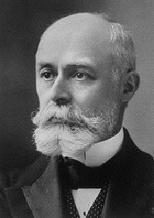 Antoine
Henri Becquerel (1852-1908) Antoine
Henri Becquerel (1852-1908)
Becquerel is credited with discovering
radioactivity. |
|
THE SCIENCE OF HUMAN
PERCEPTION |
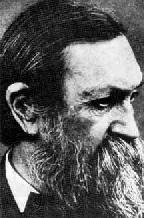 Ernst
Mach (1838-1916) Ernst
Mach (1838-1916)
Empiricist/Positivist
 Mach's
major works or writings: Mach's
major works or writings:
The Analysis
of Sensations
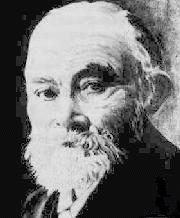
Gottlob
Frege (1848-1925)
Frege was a mathematician
and philosopher at the University of Jena in Germany. He attempted
to reduce the language of logic to mathematic formulation to give it a
precision and clarity.
 Frege's
major works or writings: Frege's
major works or writings:
Begriffsschrift
(Concept Notation) (1879)
Die Grundlagen der
Arithmetik: (The Foundations of Arithmetic) (1891)
Über Sinn und
Bedeutung (On Sense and Denotation) (1892)
Grundgesetze der Arithmetik
(Basic Laws of Arithmetic) (1893 & 1903)
Der Gedanke. Eine
logische Untersuchung (Thought: A Logical Enquiry) (1918)
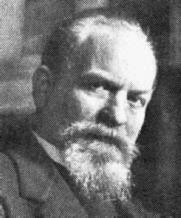 Edmund
Husserl (1859-1938) Edmund
Husserl (1859-1938)
German phenomenologist: classifier
of elements of reality (phenomena) and analysis of the essence of each
phenomenon.
Early influenced by his teacher
at the University of Vienna, Franz Brentano – who focused philosophical
enquiry into how the
mind experiences an object
(not the truth or falseness of the object itself). Husserl promoted
the idea of a phenomenological
reduction of things, so
that what we are actually studying is our experience of something, apart
from what the thing might actually be apart from our own particular experience.
The goal was to reach a sense
of the transcending ego – a self-awareness or self-conciousness of such
purity of refinement that it attains the "Archimedian point." To
Husserl this Archimedian point was far from being merely some kind of subjectivistic
reality – but was a distinct
phenomenon that could be analyzed mathematically, even though it was founded
on the inner
experience of a person and
not on the things "out there" which we think of as standing on their own
apart from whether they are
ever observed or not.
 Husserl's
major works or writings: Husserl's
major works or writings:
Philosophy
of Arithmetic (1891) An early work in which Husserl described
mathematics as the product of the logical ordering (producing generalizations
from specifics) of empirical data. Mathematics is thus the by-product of
the human mind: it is a psychological science. It has subjective reality
only in that it is a system of symbols useful in ordering empirical data
into comprehensible units of thought.
Logical Investigations
(1900-1901) Marks a radical shift in Husserl's thinking: phenomenology
is a "non-empirical" science. It focuses on pure phenomena, that
is, pure "essences" of various things and events that we observe.
The human powers of observation focus us on a particular thing or an event
out of the mass of information that our minds could be aware of at any
one moment: there is an intentionality about human consciousness.
What directs that focus is a sense of recognizing a particular pattern
or "essence" which sets a thing or an event apart from the surrounding
data. But likewise, that particular thing or event comes into "being"
or achieves its "essence" only in its being drawn out from among all the
data through the very act of being observed. Thus both the observer and
the thing observed are interdependent parts of the essence of things.
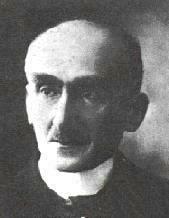 Henri
Bergson (1859-1941) Henri
Bergson (1859-1941)
 Bergson's
major works or writings: Bergson's
major works or writings:
Time and Free
Will (1889)
Matter and Memory
(1896)
Laughter (1900)
Creative Evolution
(1907)
An Introduction to
Metaphysics (1913)
The Two Sources of
Morality and Religion (1932)
|
|
CULTIVATORS OF THE
NEW TECHNOLOGY |
Alexander
Graham Bell (1847-1922)
Thomas
Alva Edison (1847-1931)
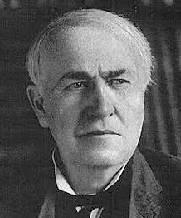
An American inventor of wide
interests and abilities – who patented over 1000 processes and instruments
during his lifetime.
Edison was born in Milan,
Ohio and raised with virtually no formal education. At age 12 he
began selling newspapers at a train station – and in a few years had succeeded
in moving himself into the station's telegraph office as operator, in turn
taking him to a number of cities as telegraphist. From this occupation
emerged his interest in technological development – especially with respect
to the sending of messages across electrical lines. But he also applied
himself to study and experimentation in a number of other related areas.
In 1868 he took out his first patent – a machine for recording and counting
votes. This was followed by work on a number of other machines – to
improve the telegraph, the typewriter, stock ticker tapes, copying devices.
In the mid 1870s his experiments
led to the development of the carbon transmitter, very important in regulating
the electrical current send across wire. At about the same time (1877)
he patented a simple phonograph of a cylinder covered by tin foil and turned
by hand. Within ten years he had vastly improved the machine by placing
his recordings on a wax cylinder and turning it by an electrical motor.
In 1879 he patented the design
of the first light bulb – an electrified carbon thread glowing in a glass
vacuum. Efforts to improve this important invention led him further into
work on electrical generators and transmitters for heat, light and power.
He extended his work in the
1880s into design of an electrical railway, a prototype of the first radio
tube, and an electric transmitter which could send signals through the
air between ships and trains. In the 1890s he worked at a way of
using electricity to produce iron ore concentrations (1890s). In
the early 1900s he developed an improved electrical storage battery.
In 1891 he patented a camera
which was able to take pictures in rapid success onto a film strip when
then could be run through an illuminated box to produce motion pictures.
Later he was to develop the projector – by which the images were thrown
on a screen by a bright light.
During America's involvement
in World War One (1917-1918) Edison extended his realm of experimental
interests to include chemicals used in warfare. |
|
THE 19TH CENTURY:
A FULL HISTORY |

Go on to the next section: The First Half of the 20th Century
 Miles
H. Hodges Miles
H. Hodges
| | | | |


 Emerson is best known as leader
of the "transcendentalist" movement in America.
Emerson is best known as leader
of the "transcendentalist" movement in America.



 David
Ricardo (1772-1823)
David
Ricardo (1772-1823)

 C.S.
Peirce (1839-1914)
C.S.
Peirce (1839-1914) William
James (1842-1910)
William
James (1842-1910)

 Vicomte
François René de Chateaubriande (1768-1848)
Vicomte
François René de Chateaubriande (1768-1848)
 Feodor
Mikhailovich Dostoevsky (1821-1881)
Feodor
Mikhailovich Dostoevsky (1821-1881) Count
Leo Tolstoy (1828-1910)
Count
Leo Tolstoy (1828-1910) William
Blake (1757-1827)
William
Blake (1757-1827) William
Wordsworth (1770-1850)
William
Wordsworth (1770-1850) Samuel
Taylor Coleridge (1772-1834)
Samuel
Taylor Coleridge (1772-1834)

 Thomas
Carlyle (1795-1881)
Thomas
Carlyle (1795-1881) Elizabeth
Barrett Browning (1806-1861)
Elizabeth
Barrett Browning (1806-1861) Alfred,
Lord Tennyson (1809-1892)
Alfred,
Lord Tennyson (1809-1892) Robert
Browning (1812-1889)
Robert
Browning (1812-1889) Charles
Dickens (1812-1870)
Charles
Dickens (1812-1870) John
Ruskin (1819-1900)
John
Ruskin (1819-1900) Walt
Whitman (1819-1892)
Walt
Whitman (1819-1892)
 Henry
David Thoreau (1817-1862)
Henry
David Thoreau (1817-1862)

 Friedrich
Schelling (1775-1854)
Friedrich
Schelling (1775-1854) Heinrich
von Treitschke (1834-1896)
Heinrich
von Treitschke (1834-1896) Wilhelm
Dilthey (1833-1911)
Wilhelm
Dilthey (1833-1911)






 Charles
François-Marie Fourier (1772-1837)
Charles
François-Marie Fourier (1772-1837)
 Pierre-Joseph
Proudhon (1809-1865)
Pierre-Joseph
Proudhon (1809-1865) 
 Friedrich
Engels (1820-1895)
Friedrich
Engels (1820-1895)




 Max
Weber (1864-1920)
Max
Weber (1864-1920) Helena
Petrova Blavatsky (1831-1891)
Helena
Petrova Blavatsky (1831-1891)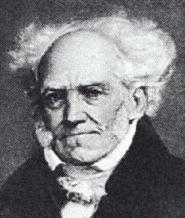 Arthur
Schopenhauer (1788-1860)
Arthur
Schopenhauer (1788-1860)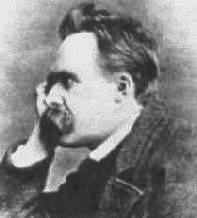 Friedrich
Nietzsche (1844-1900)
Friedrich
Nietzsche (1844-1900)







 Charles
Haddon Spurgeon (1834-1892)
Charles
Haddon Spurgeon (1834-1892)
 R.A.
(Reuben Archer) Torrey (1856-1928)
R.A.
(Reuben Archer) Torrey (1856-1928) William
Ashley "Billy" Sunday (1862-1935)
William
Ashley "Billy" Sunday (1862-1935)

 Brigham
Young (1801-1877)
Brigham
Young (1801-1877) Mary
Baker Eddy (1821-1910)
Mary
Baker Eddy (1821-1910) Charles
Taze Russell (1852-1916)
Charles
Taze Russell (1852-1916) Friedrich
Wilhelm Bessel (1784-1846)
Friedrich
Wilhelm Bessel (1784-1846) Joseph
von Fraunhofer (1787-1887)
Joseph
von Fraunhofer (1787-1887) Gustav
Robert Kirchoff (1824-1887)
Gustav
Robert Kirchoff (1824-1887) Annie
J. Cannon (1863-1941)
Annie
J. Cannon (1863-1941)



 Albert
Michelson (1852-1931) and Edward Morley
Albert
Michelson (1852-1931) and Edward Morley Hendrik
Lorentz (1853-1928)
Hendrik
Lorentz (1853-1928) Antoine
Henri Becquerel (1852-1908)
Antoine
Henri Becquerel (1852-1908) Ernst
Mach (1838-1916)
Ernst
Mach (1838-1916)
 Edmund
Husserl (1859-1938)
Edmund
Husserl (1859-1938) Henri
Bergson (1859-1941)
Henri
Bergson (1859-1941)



